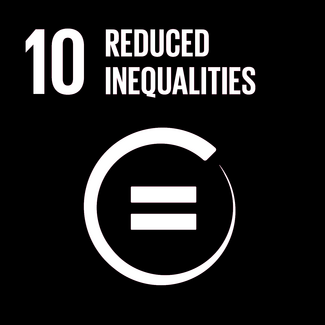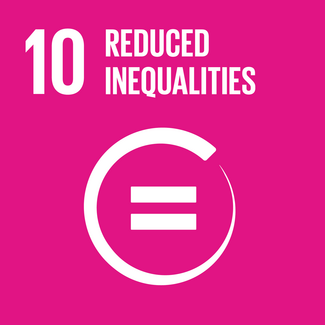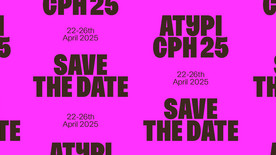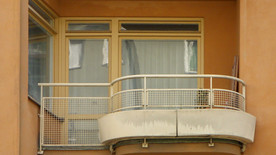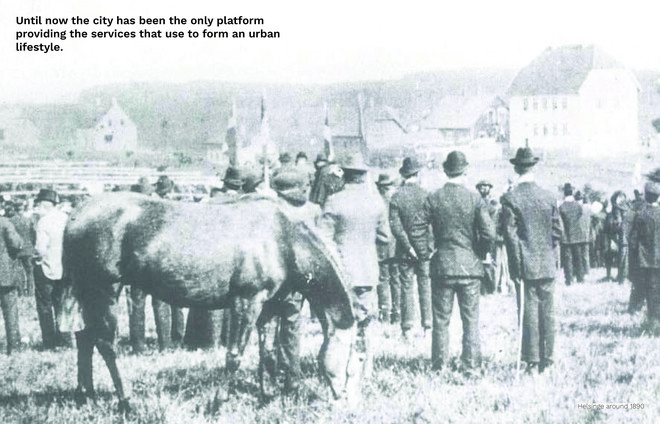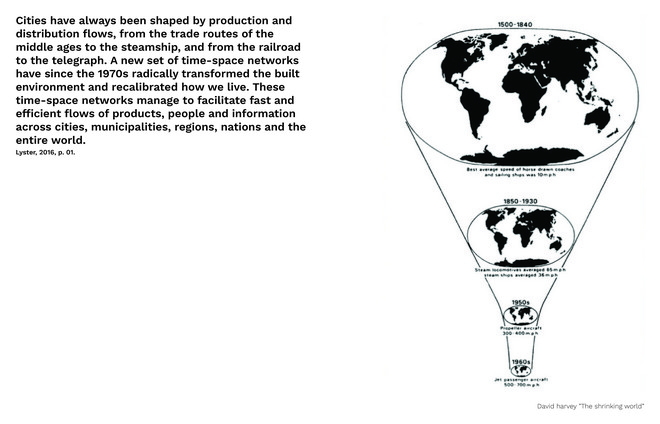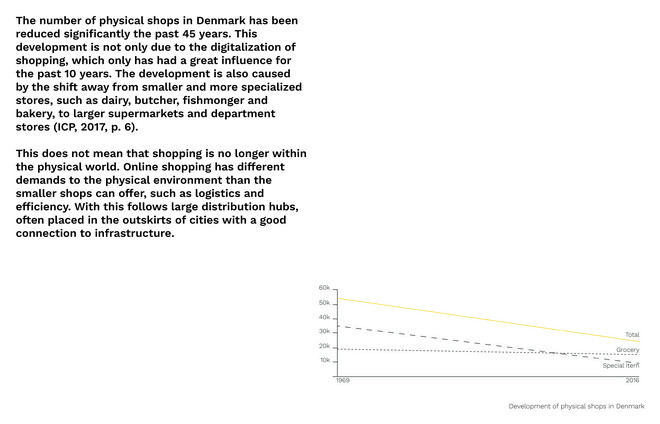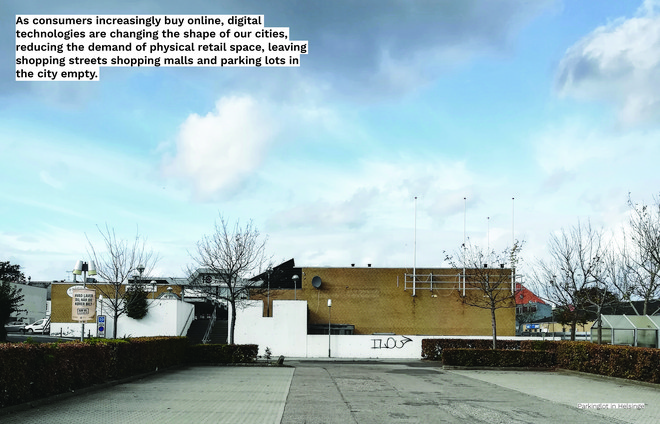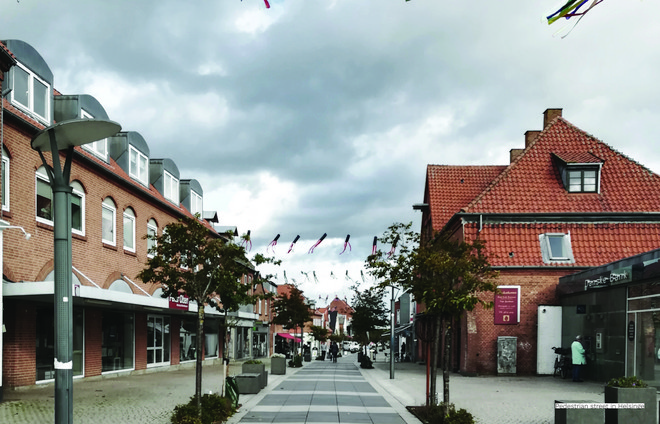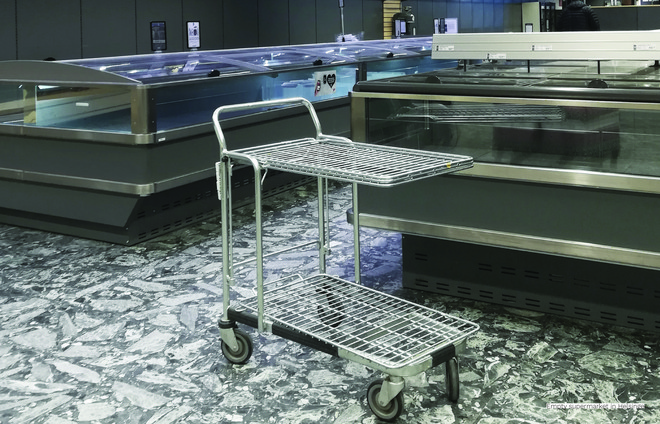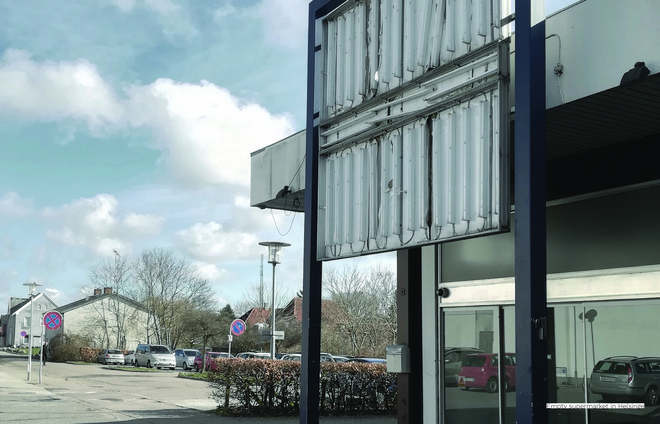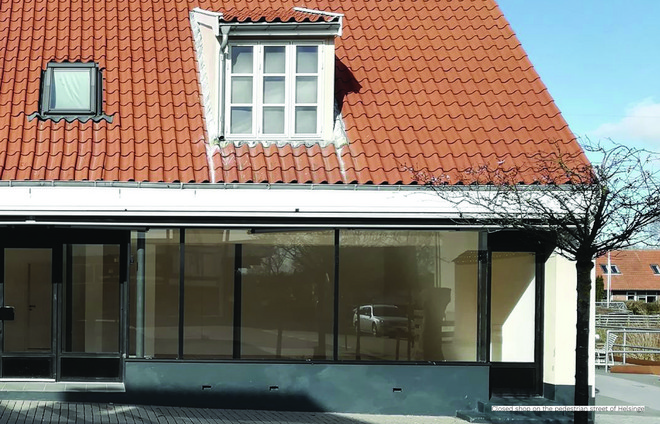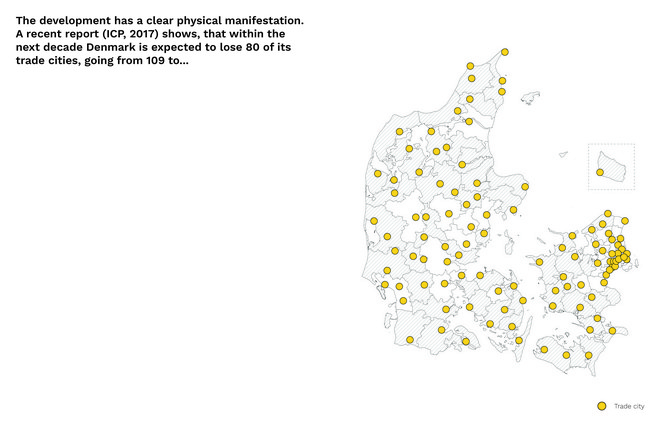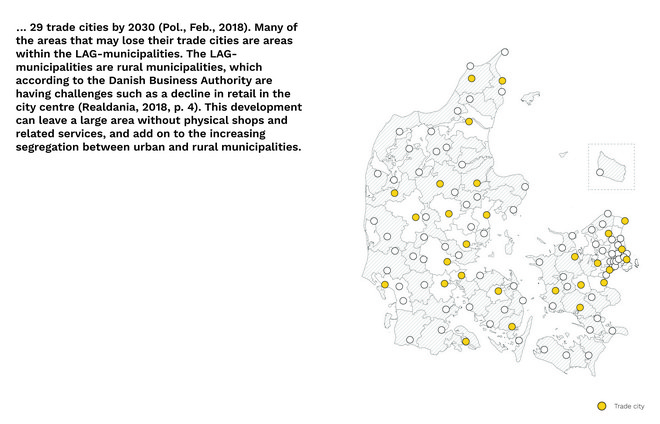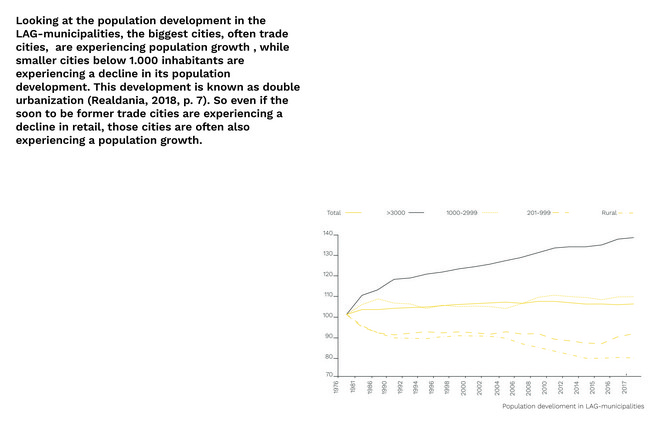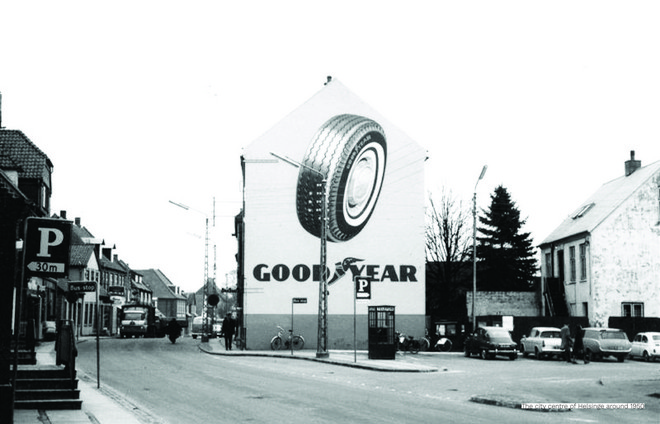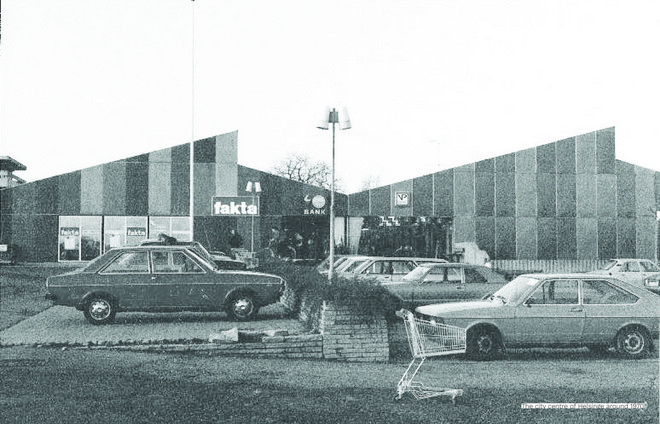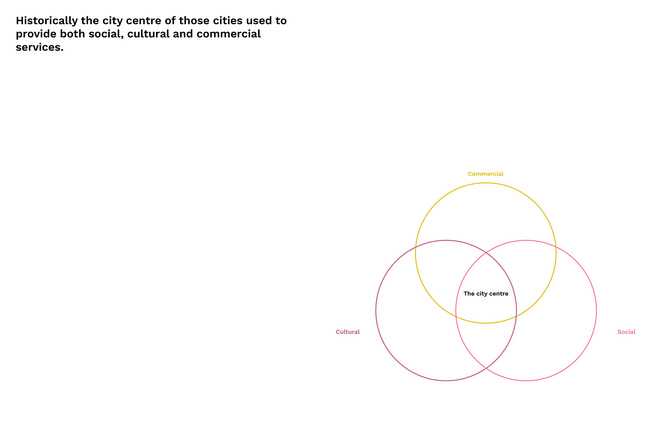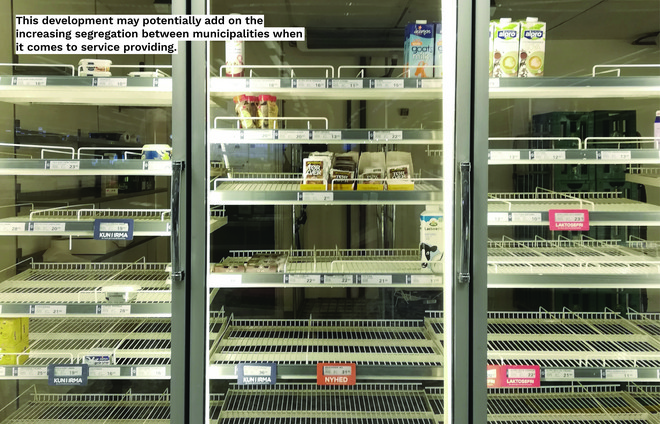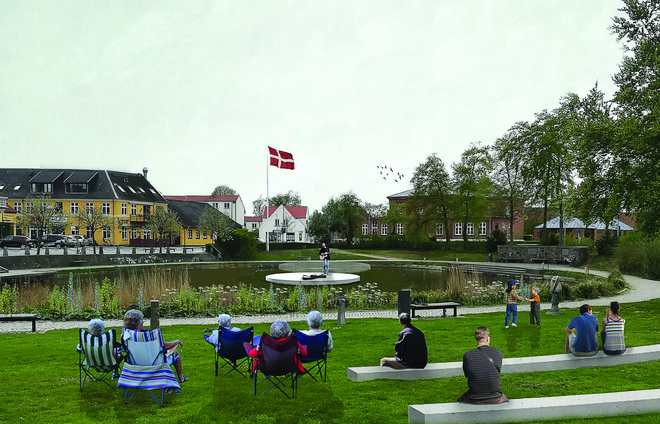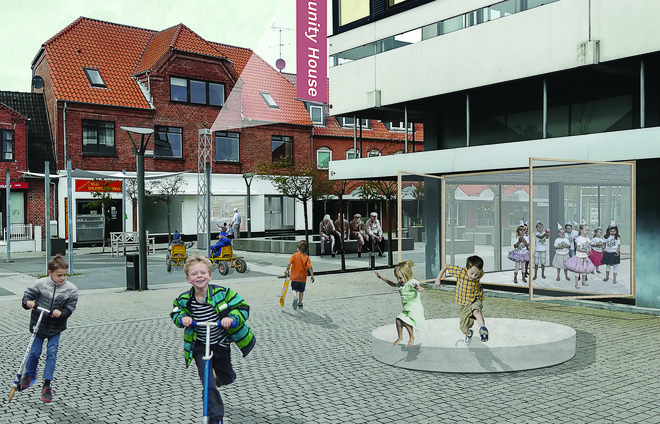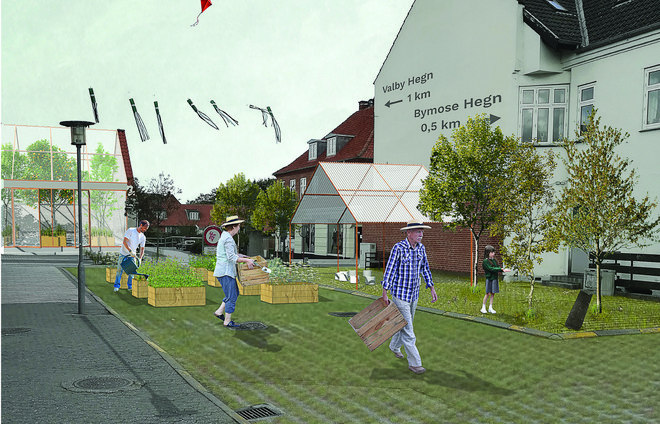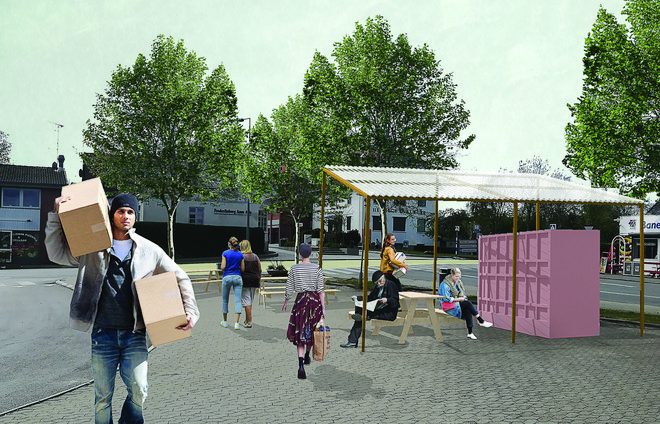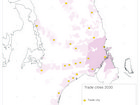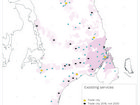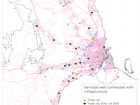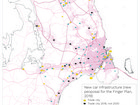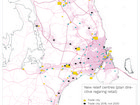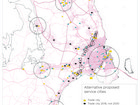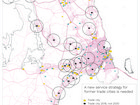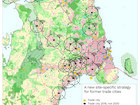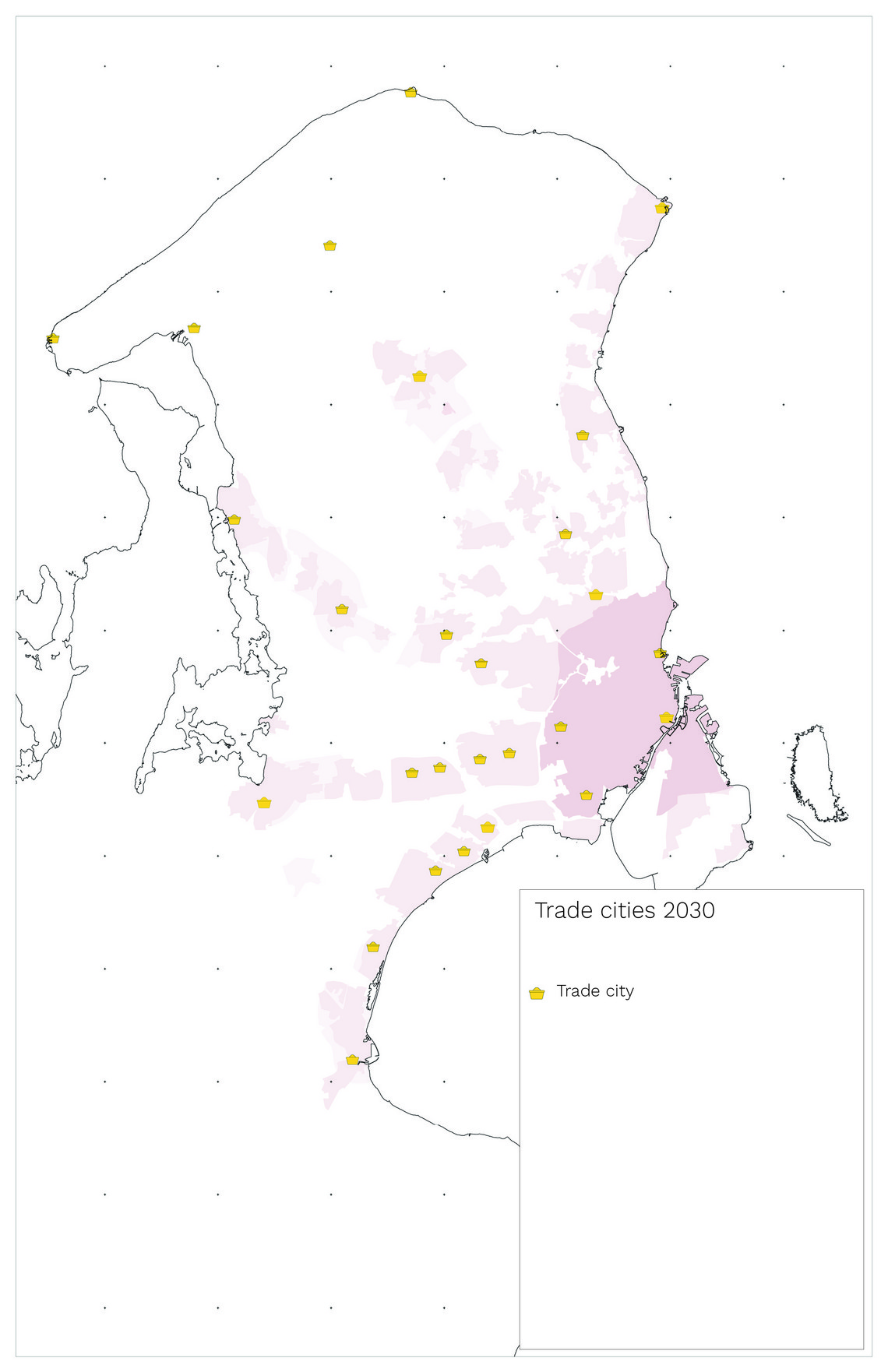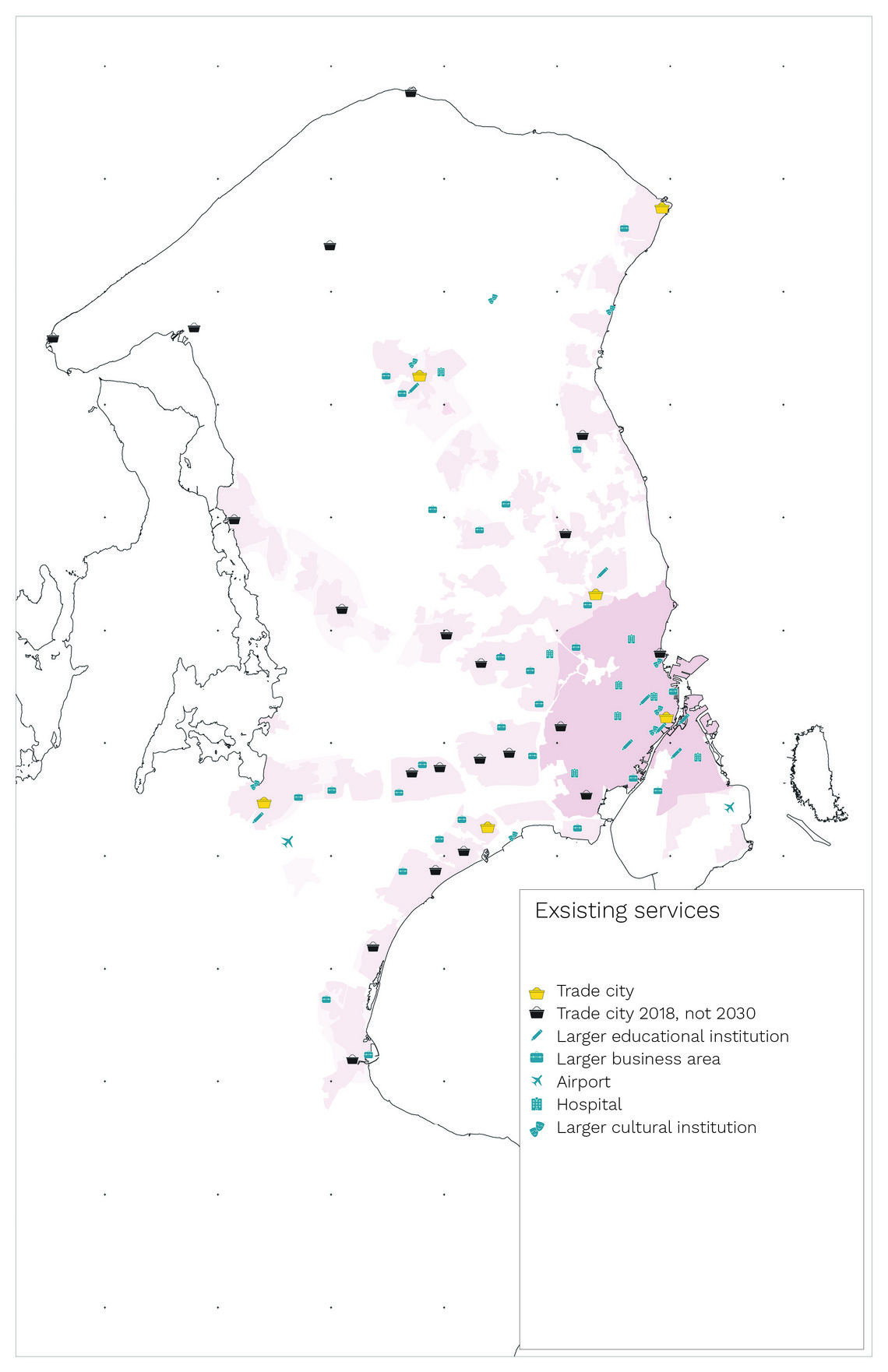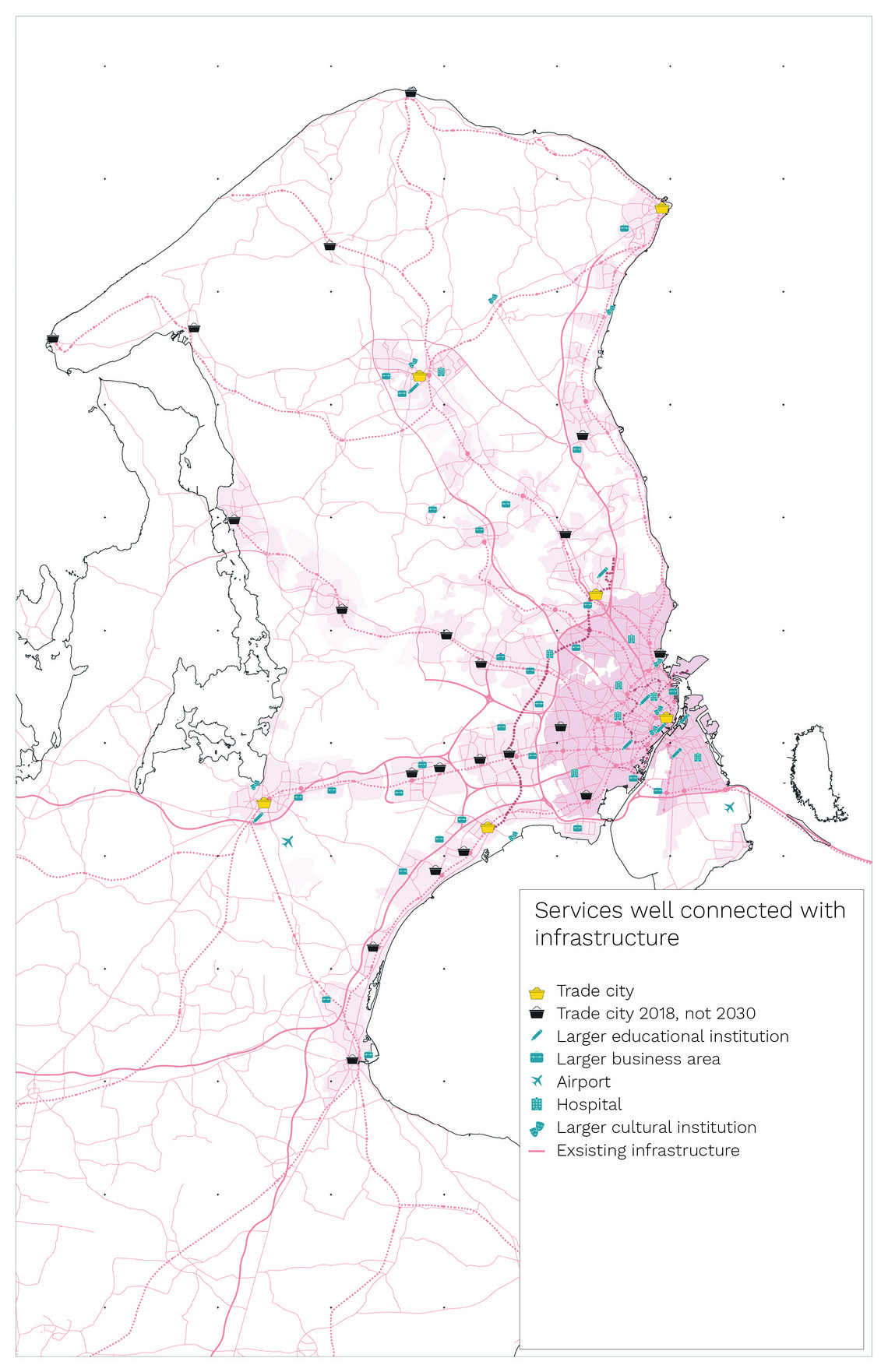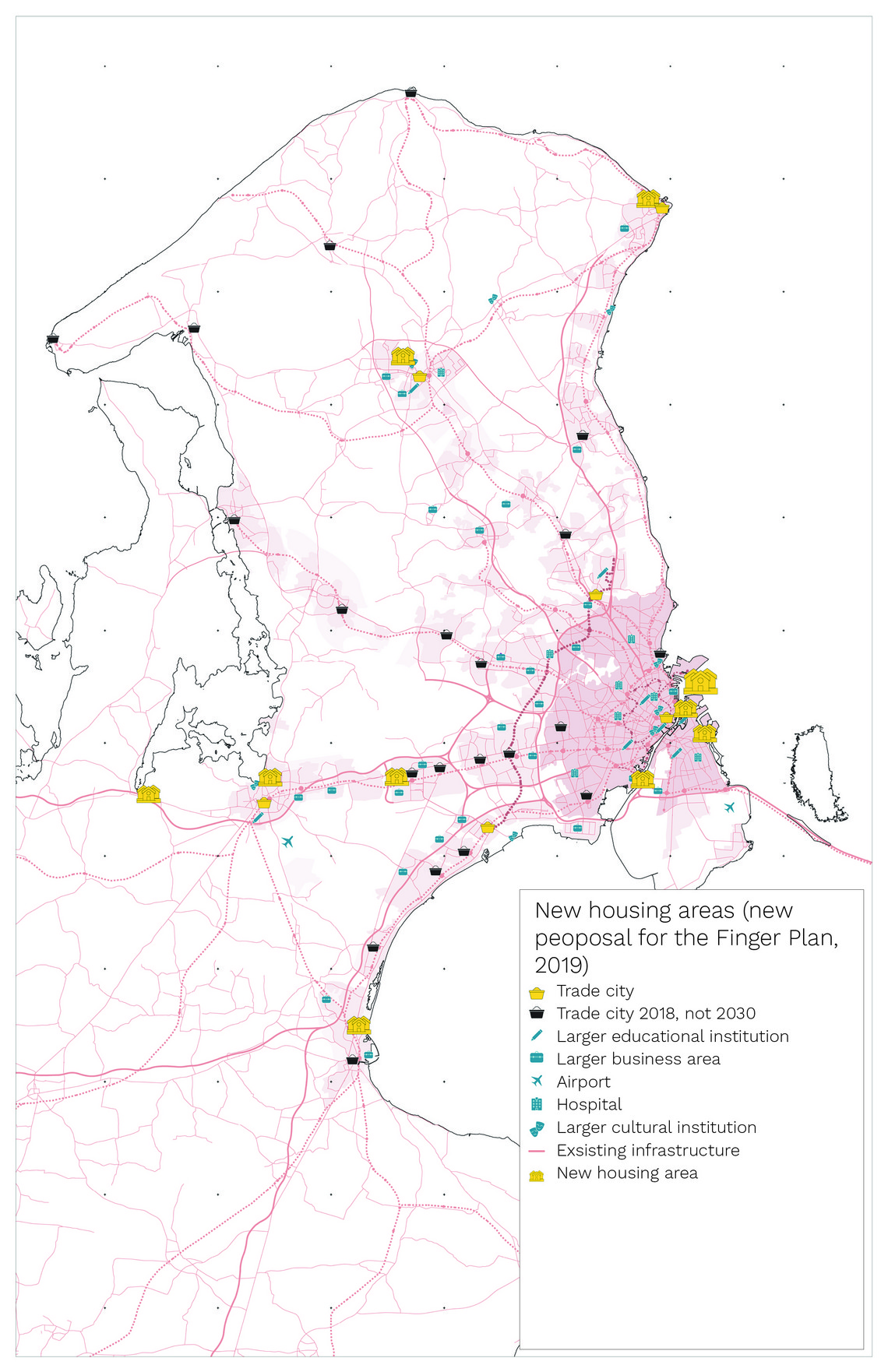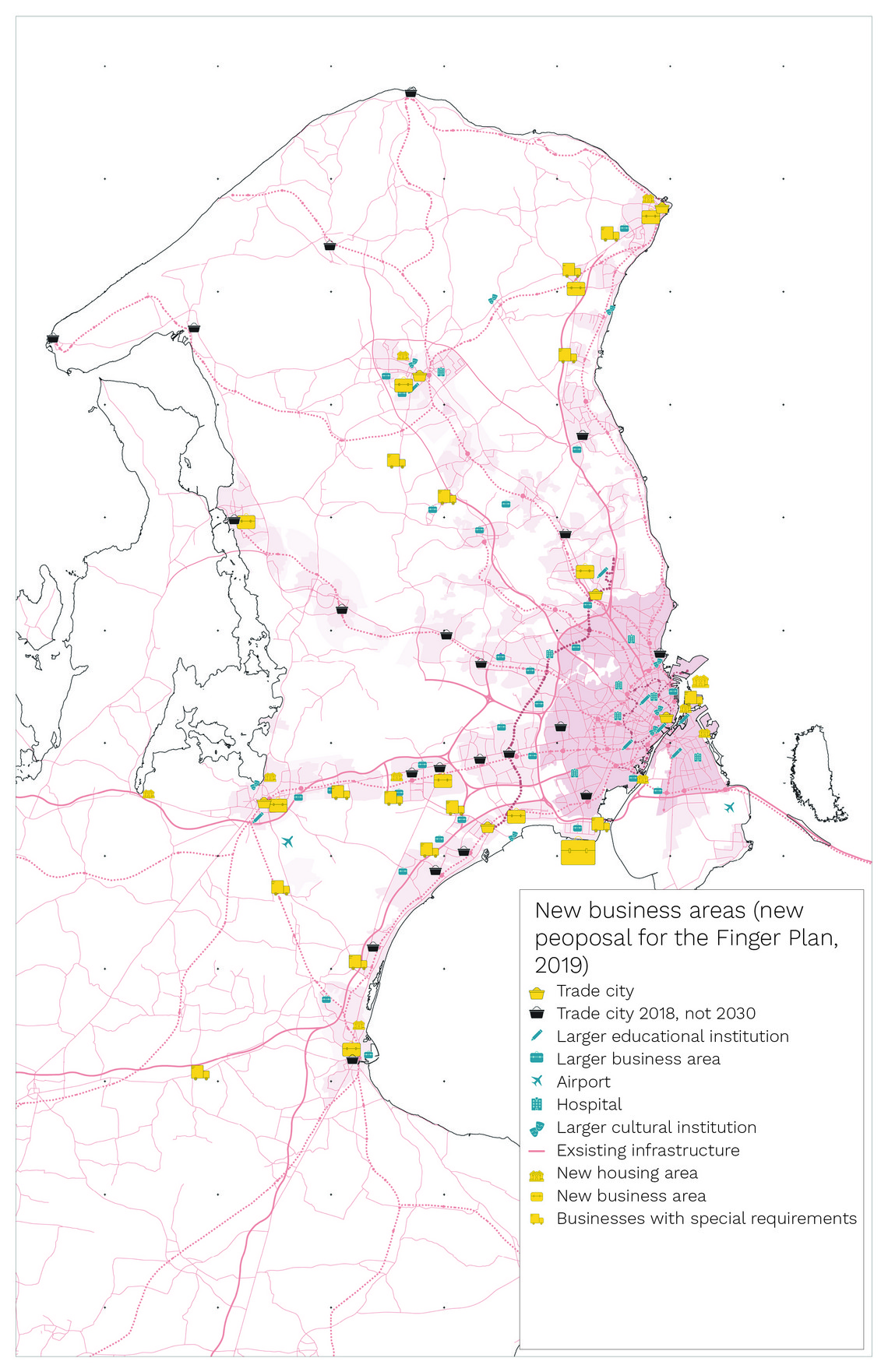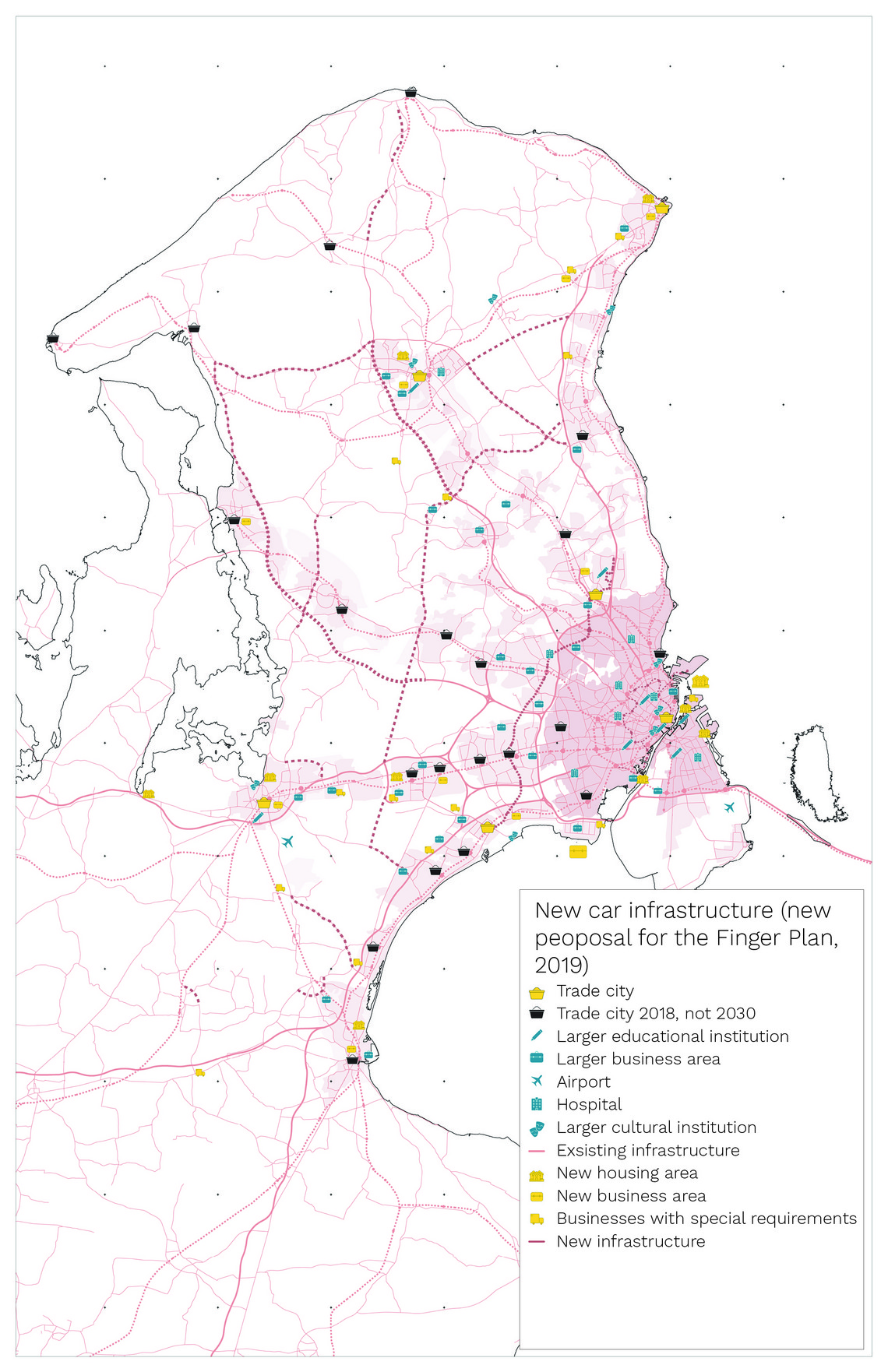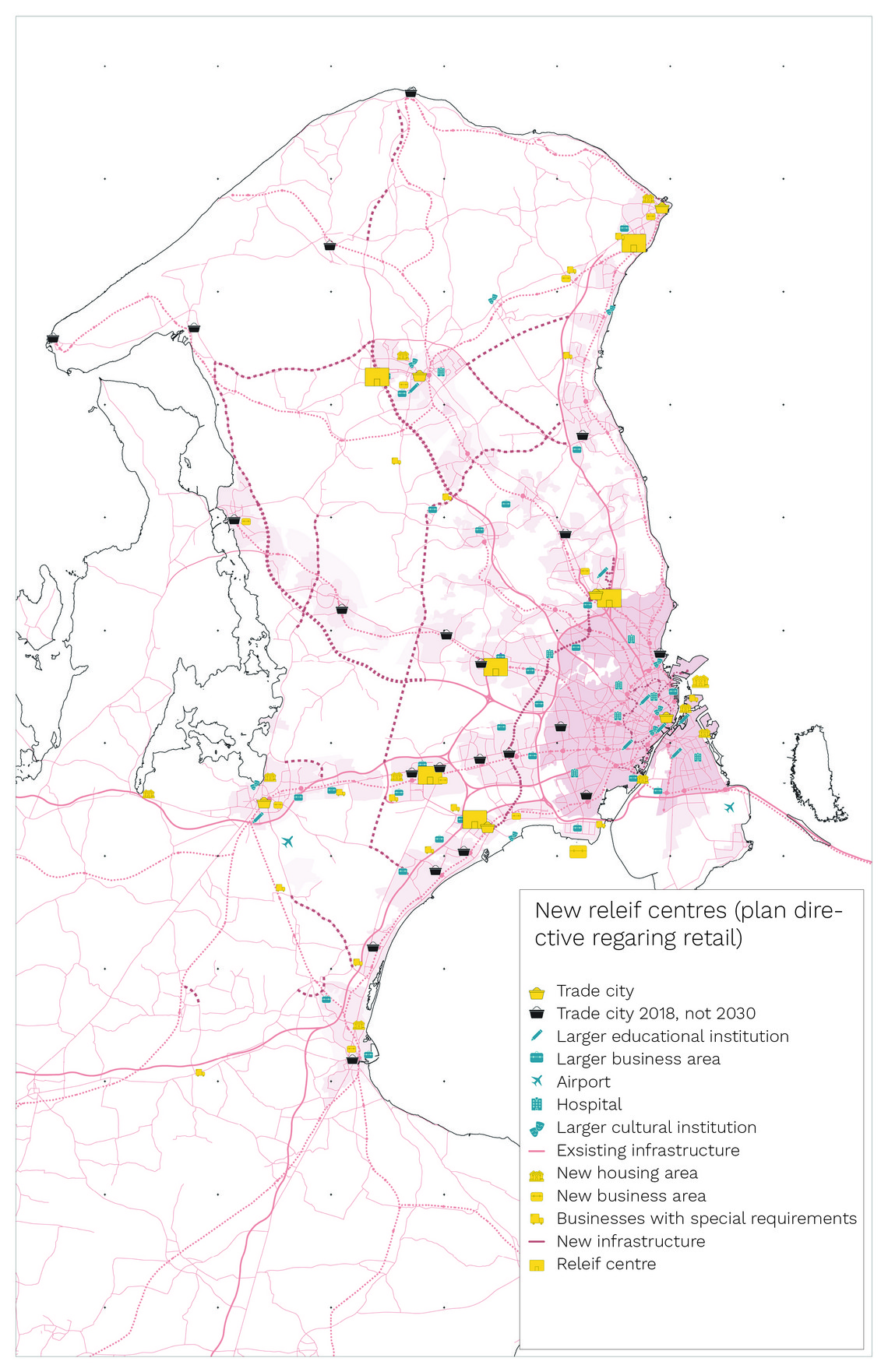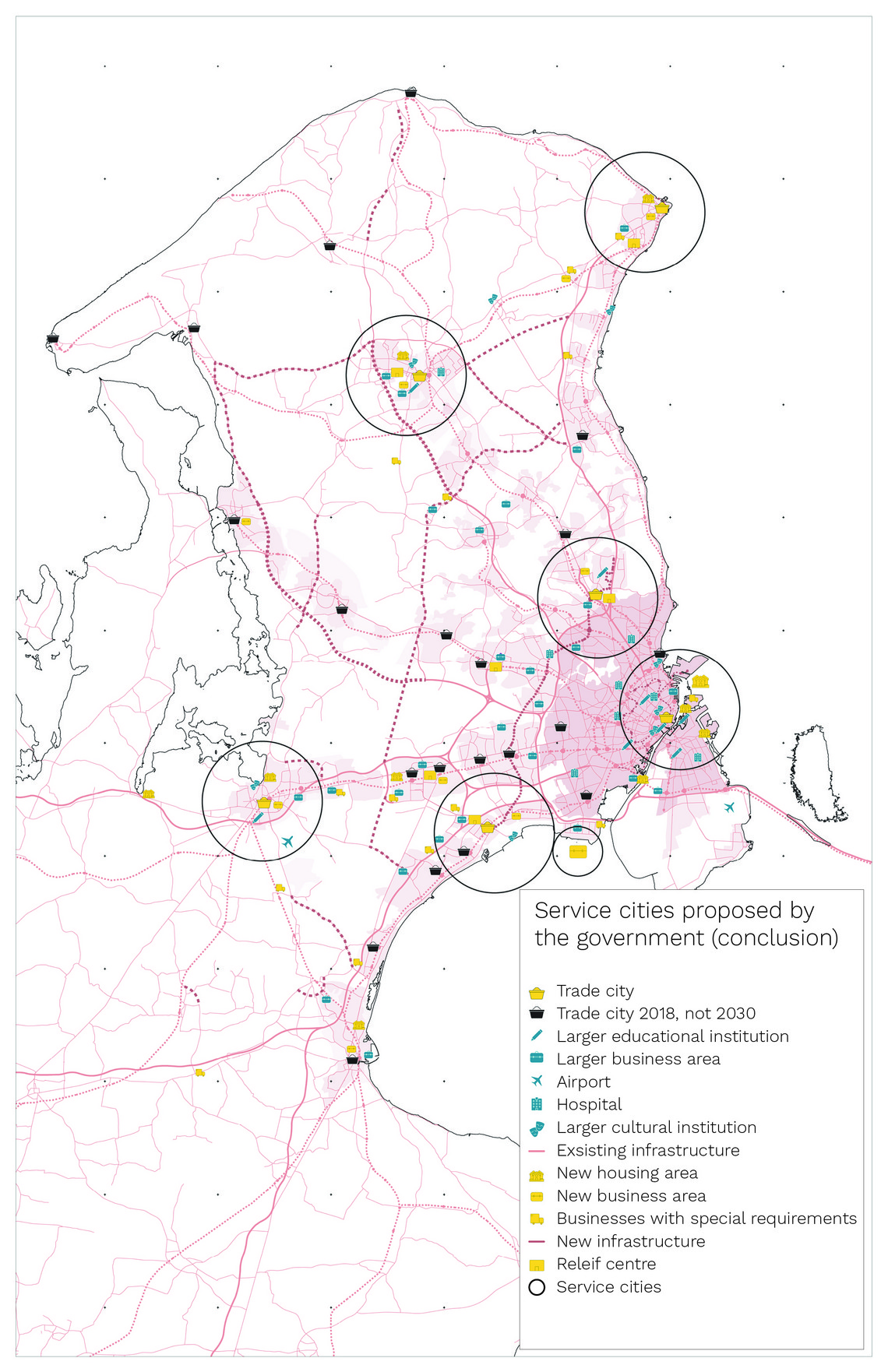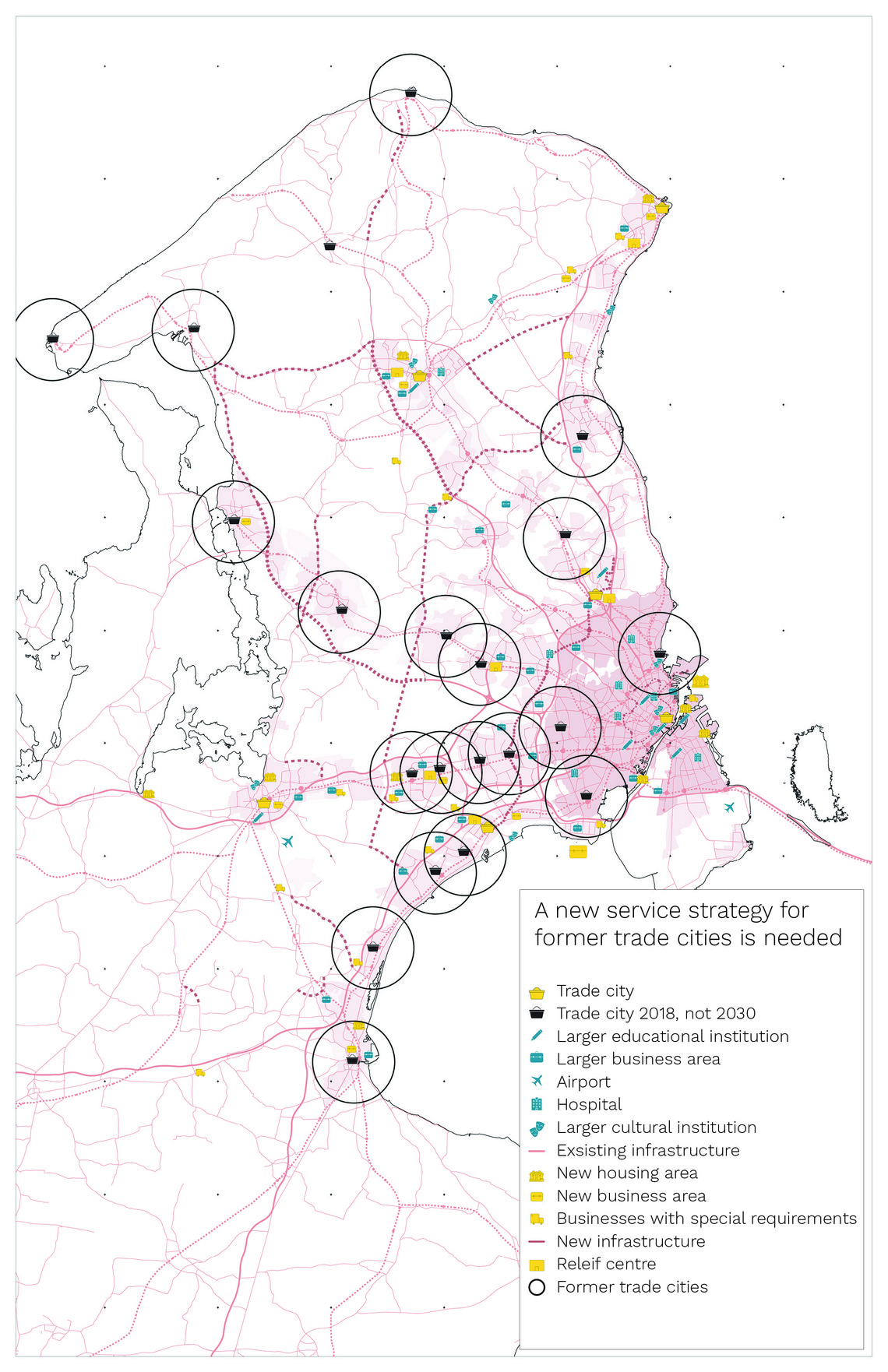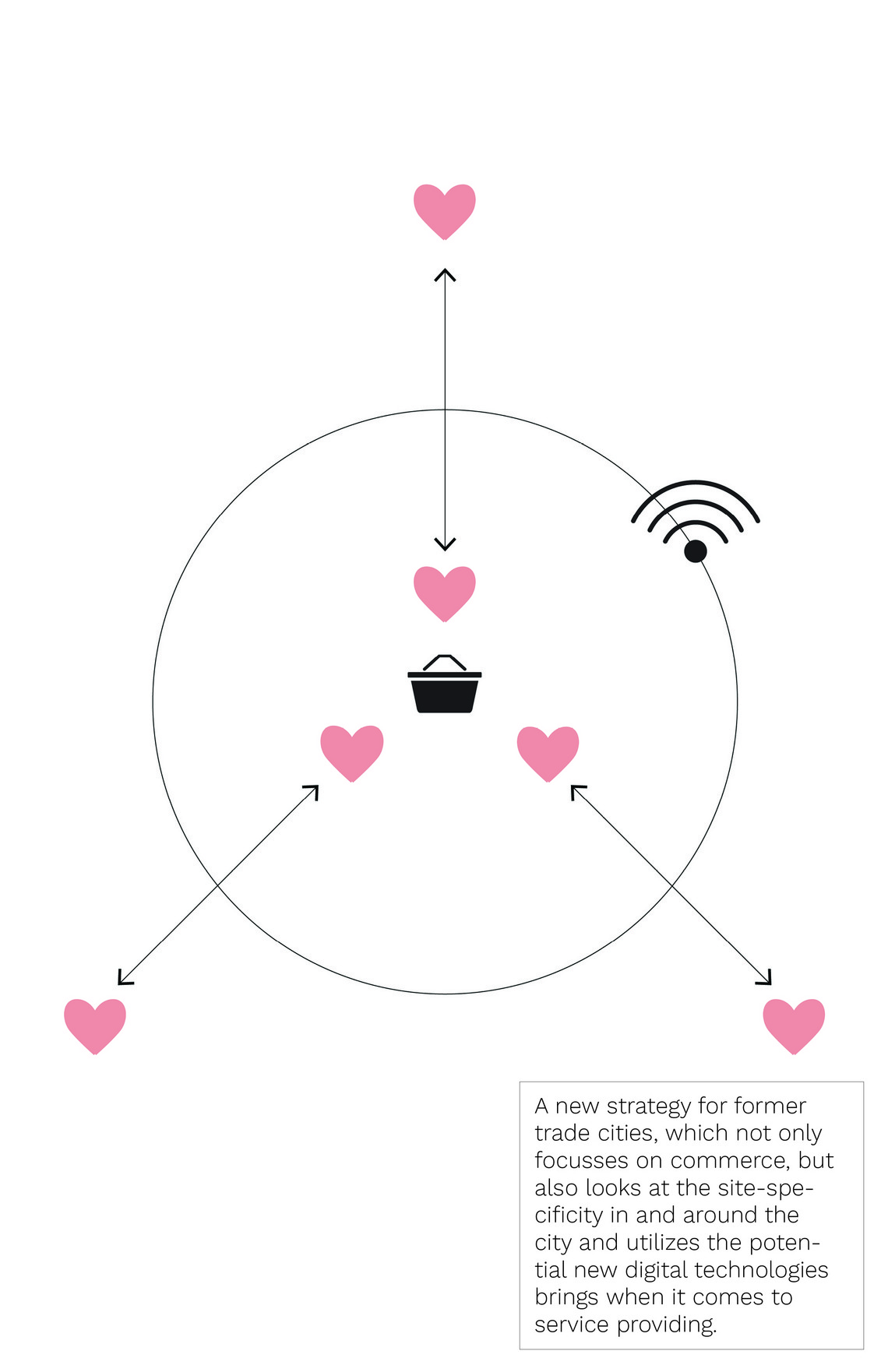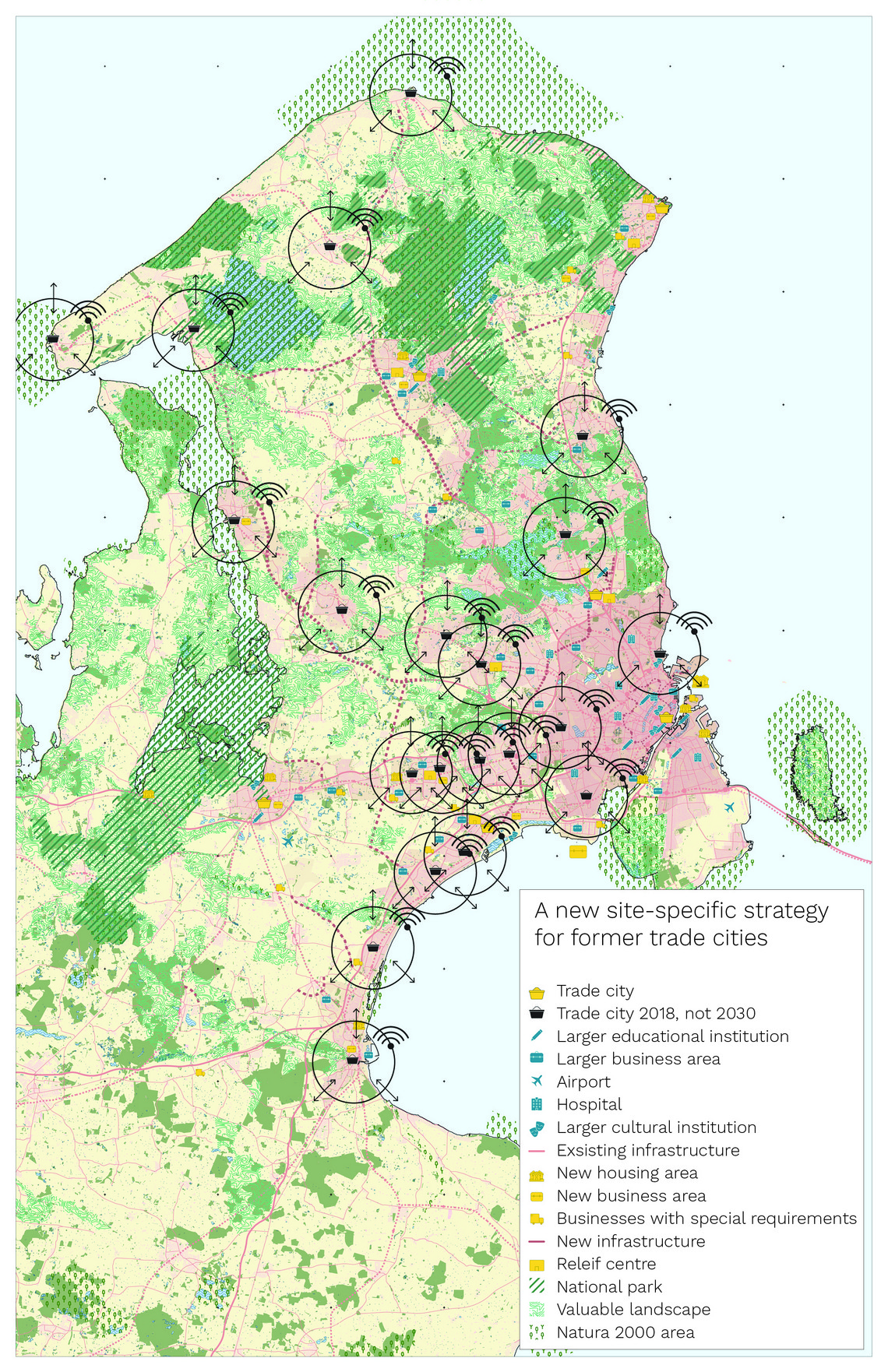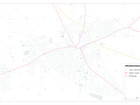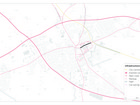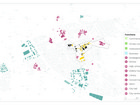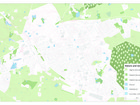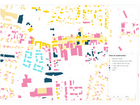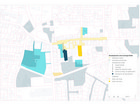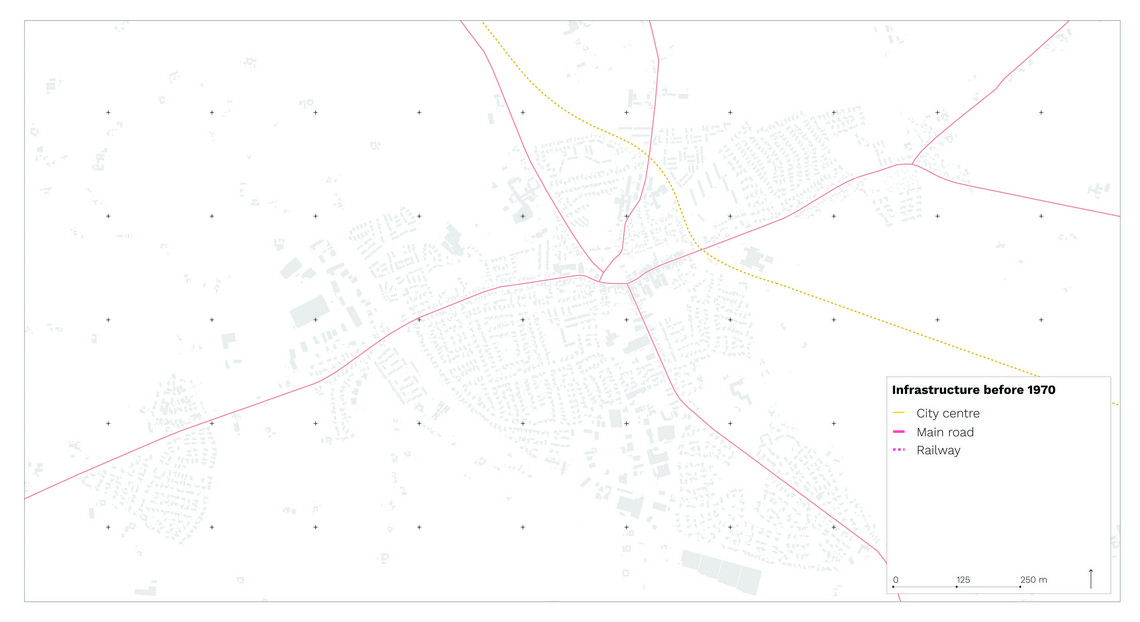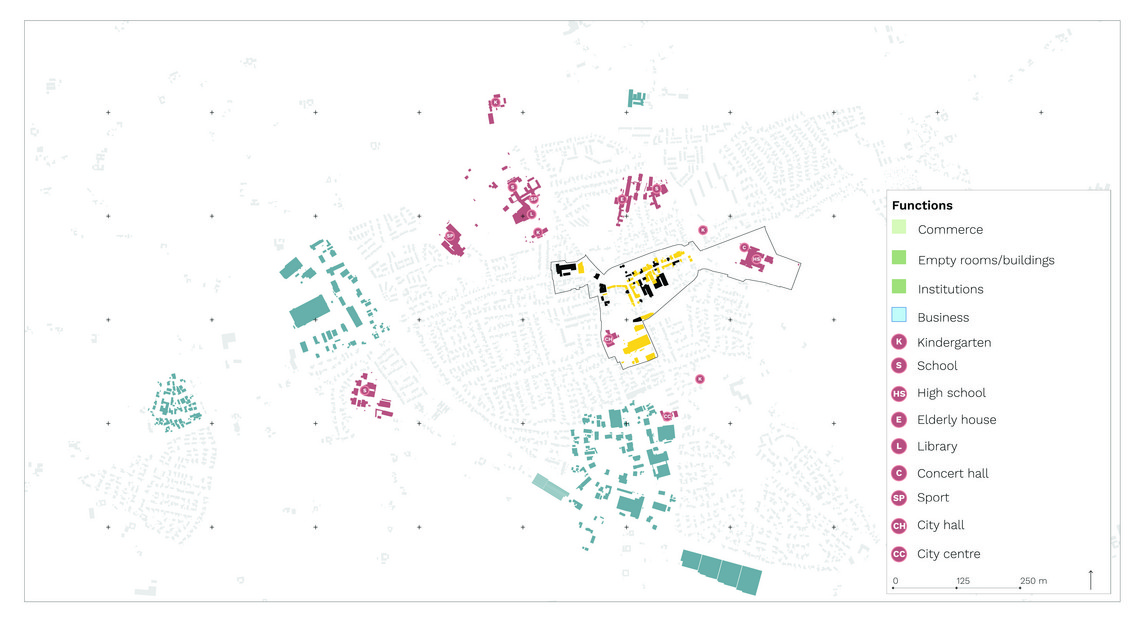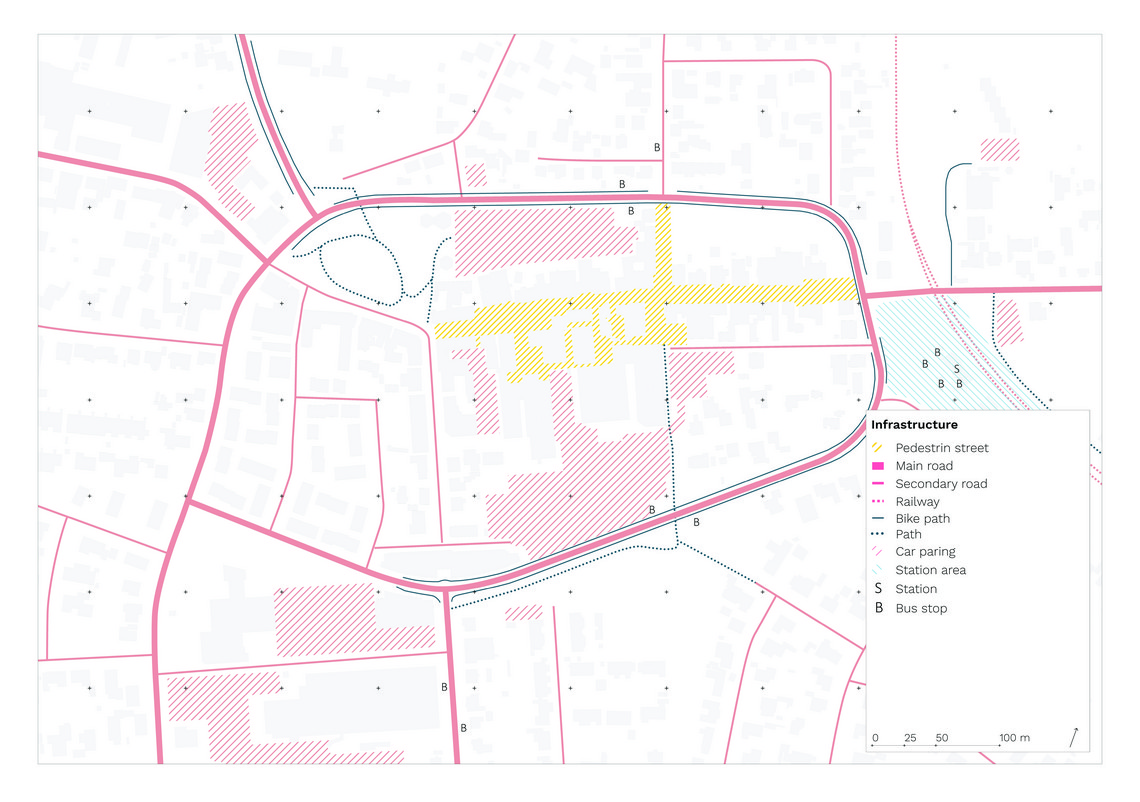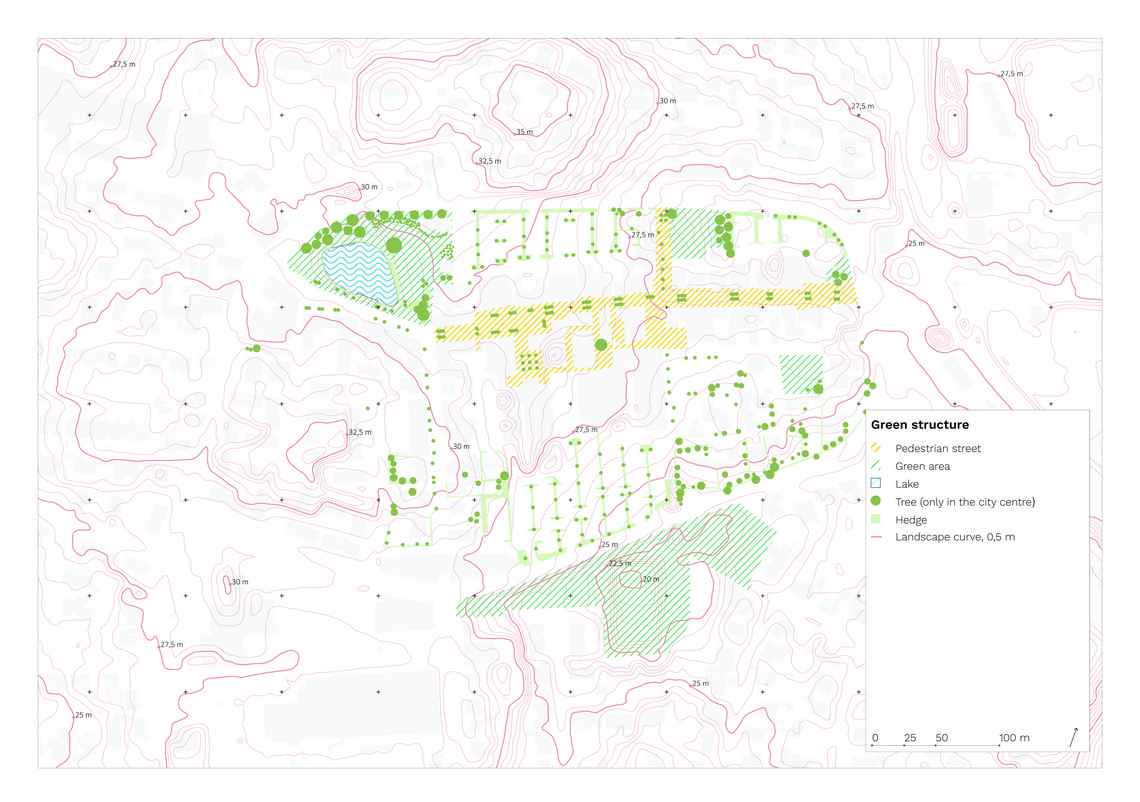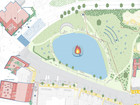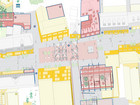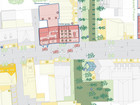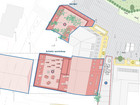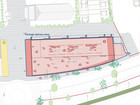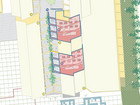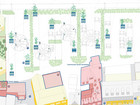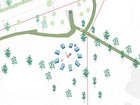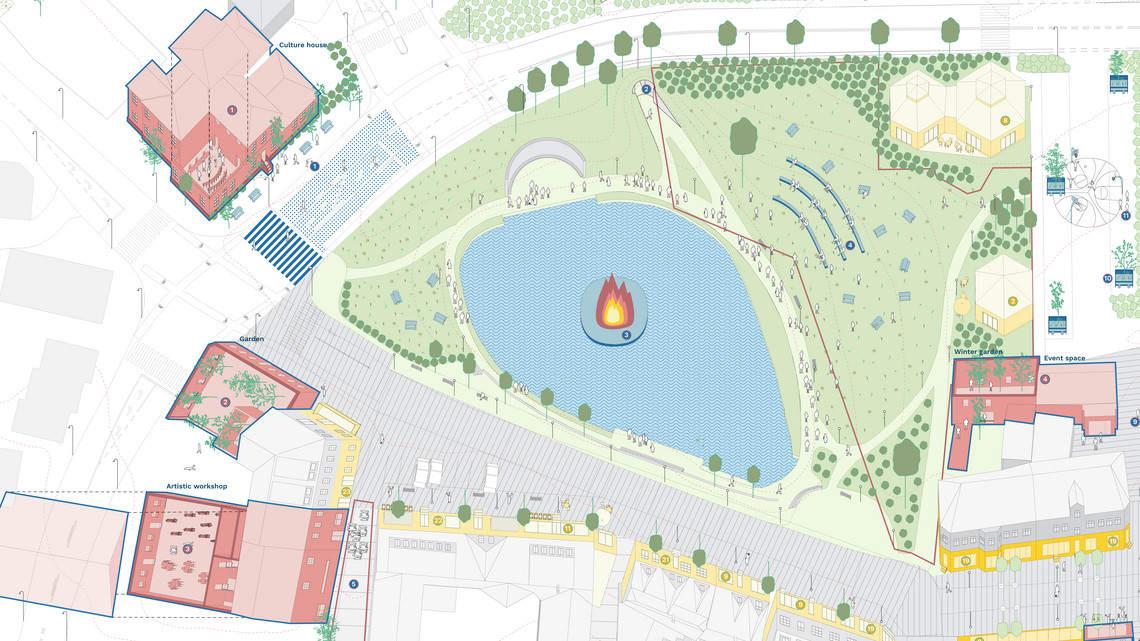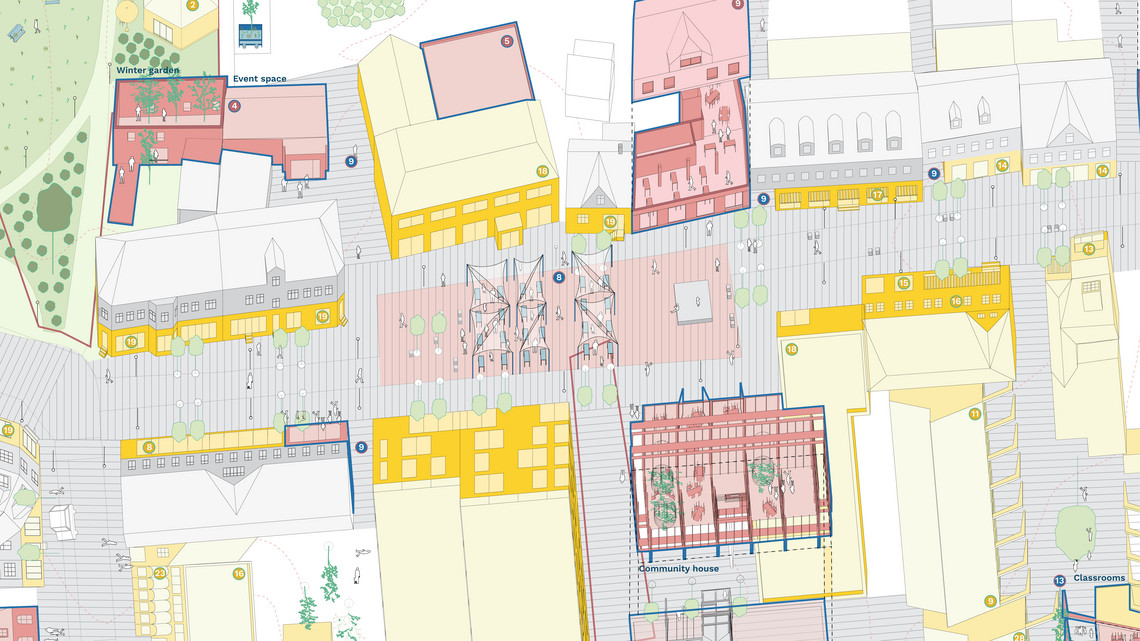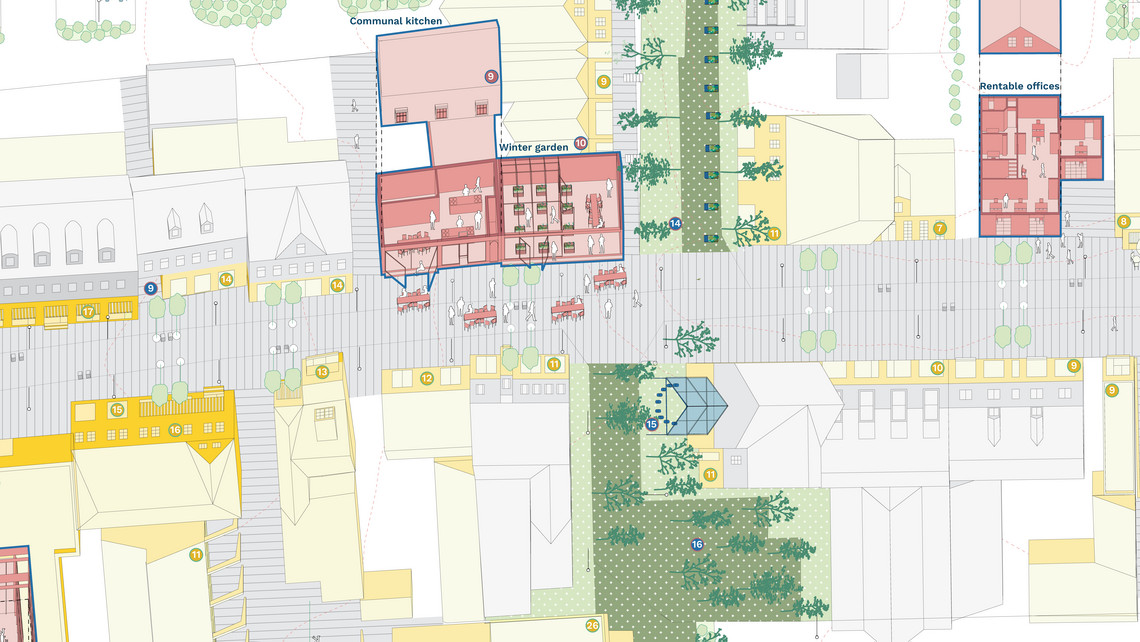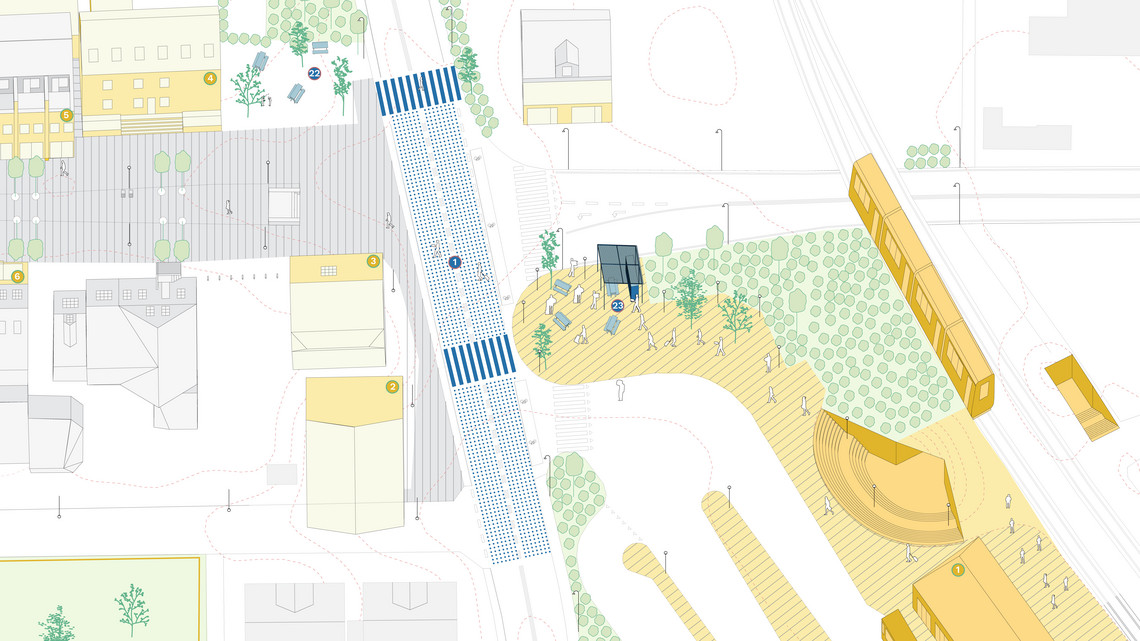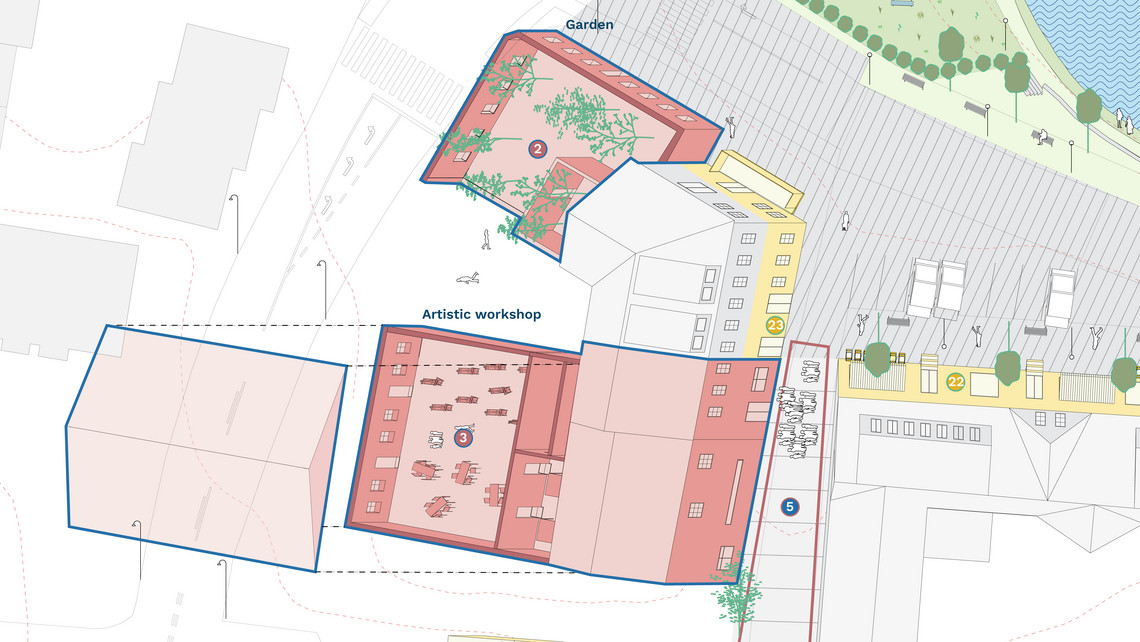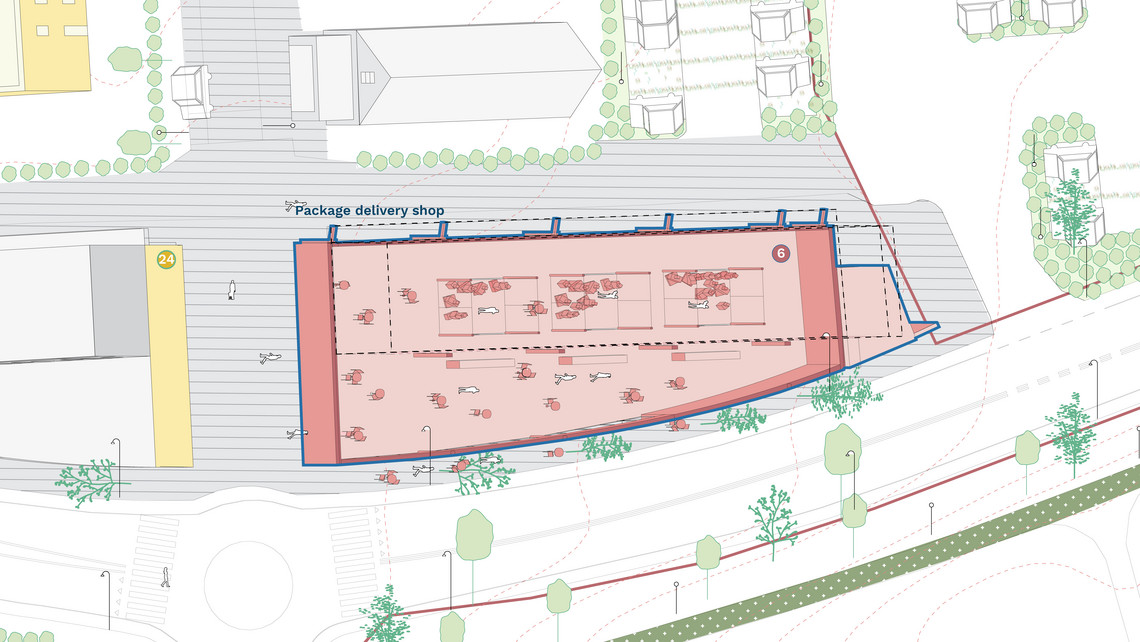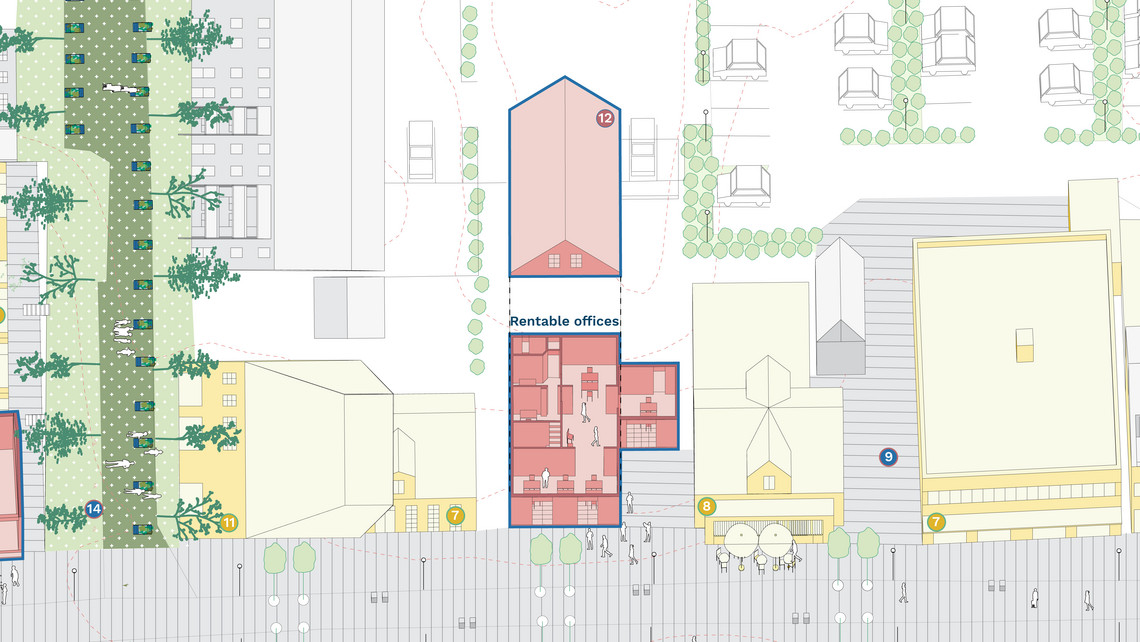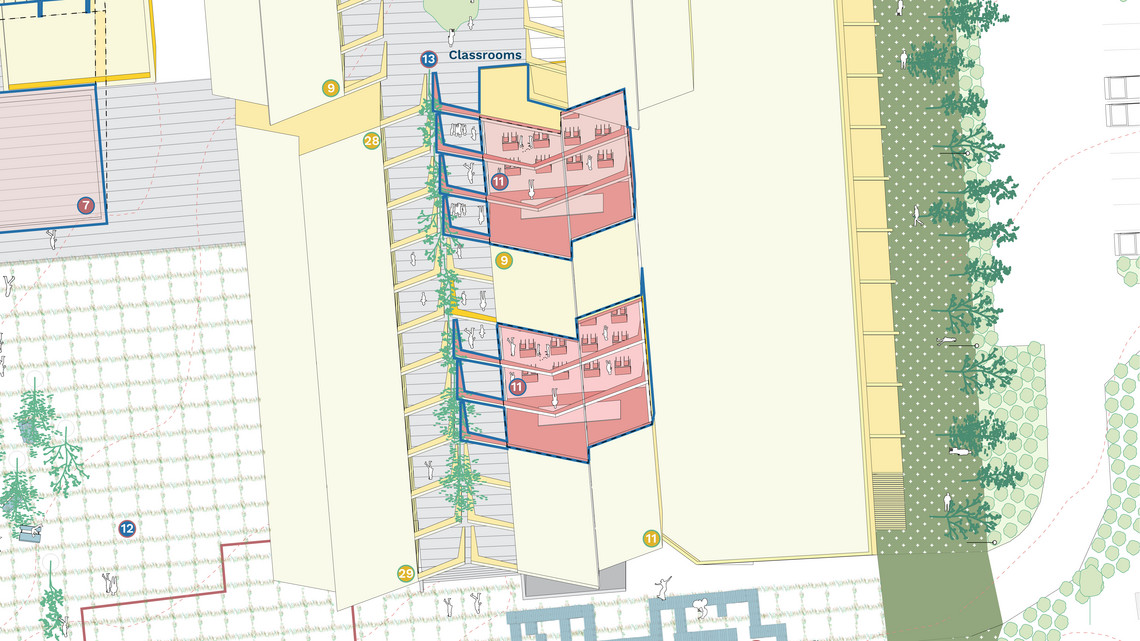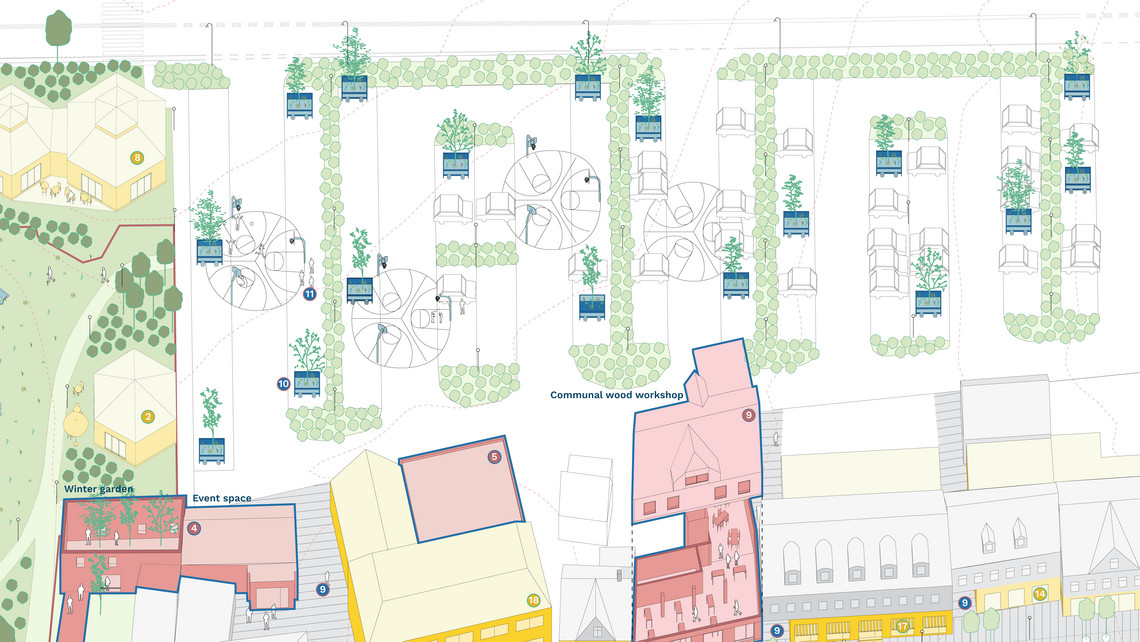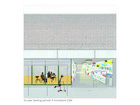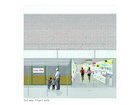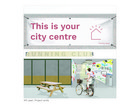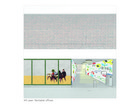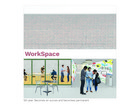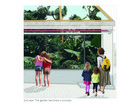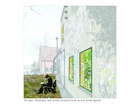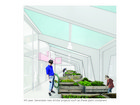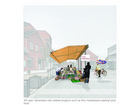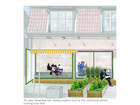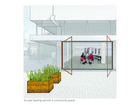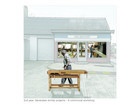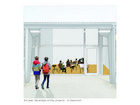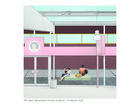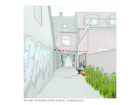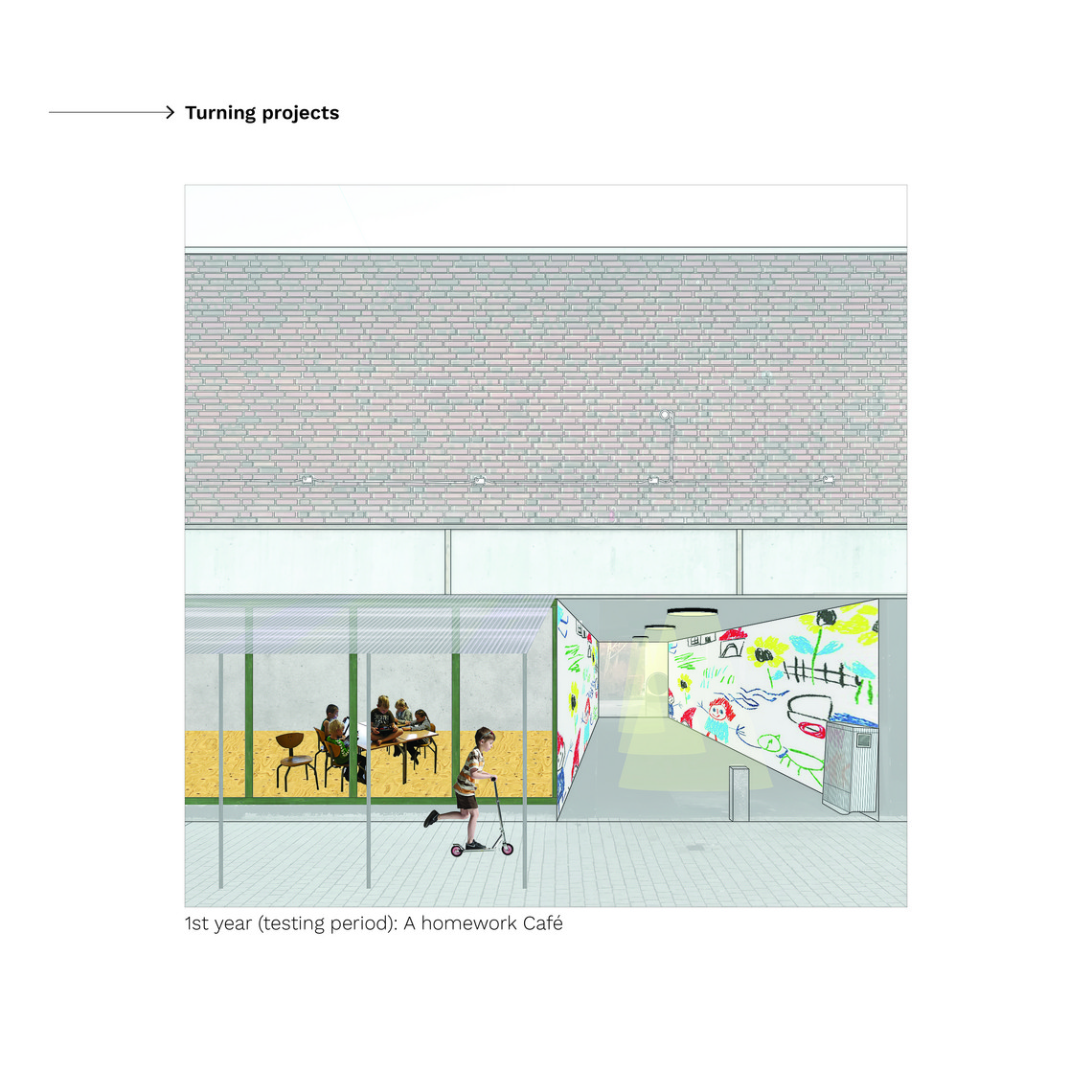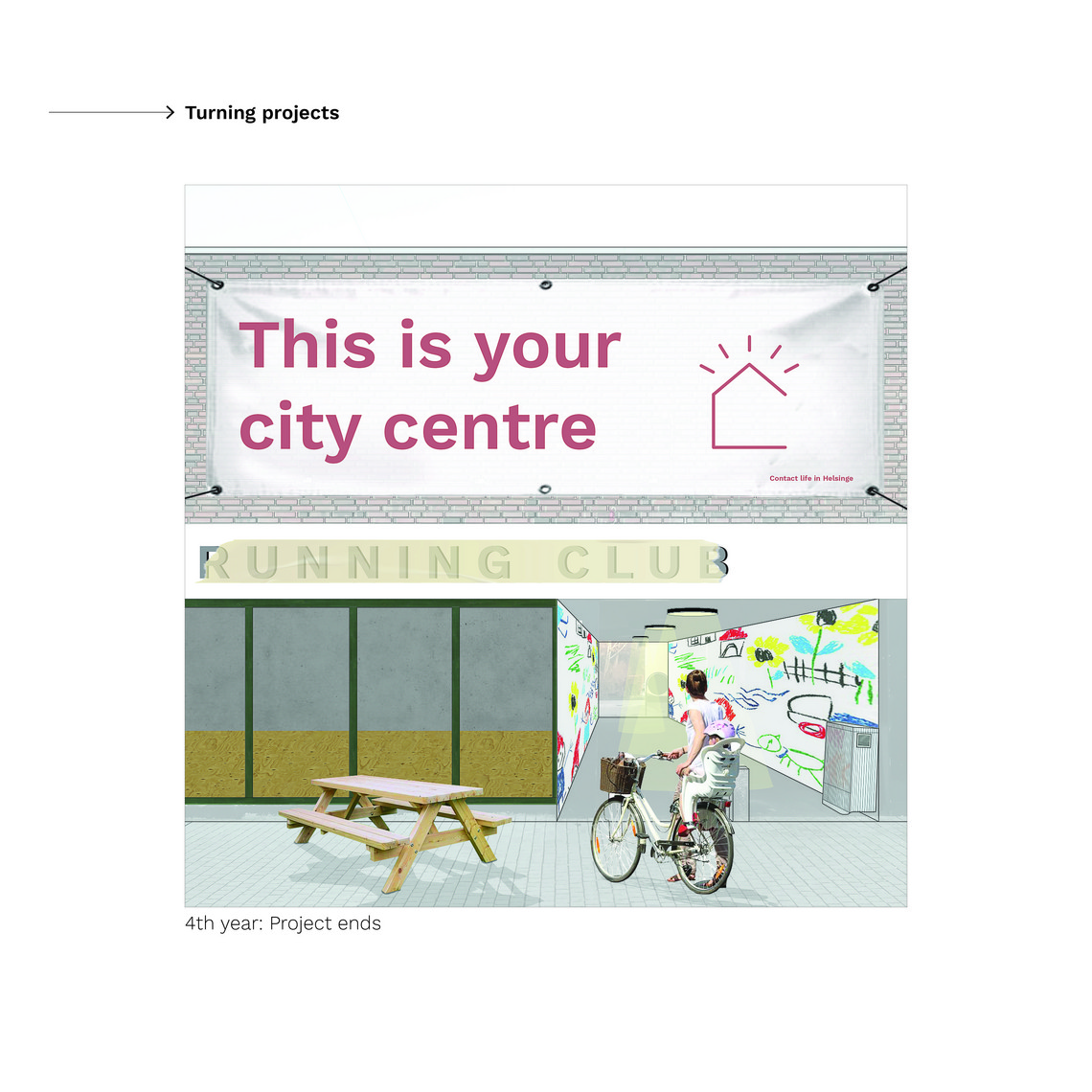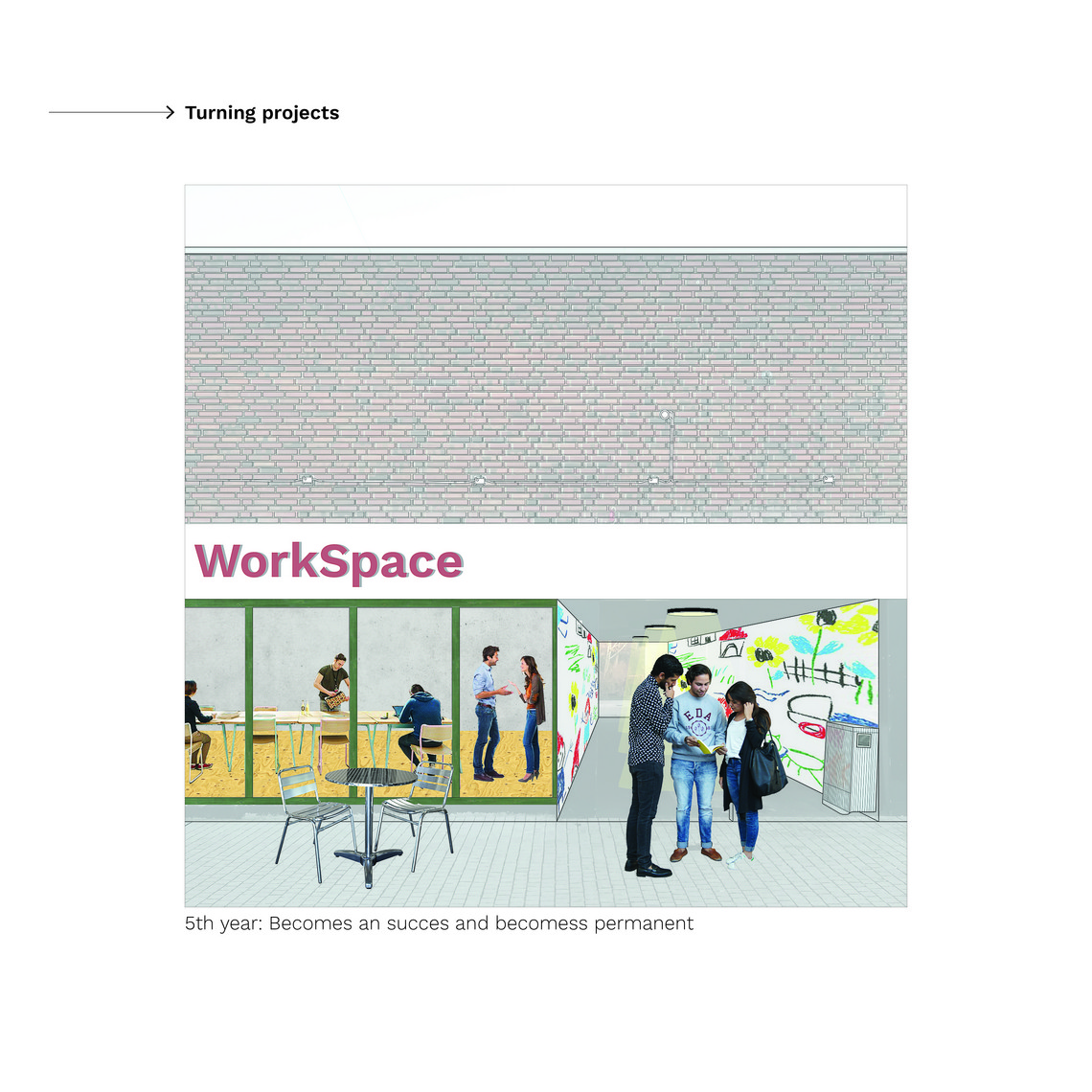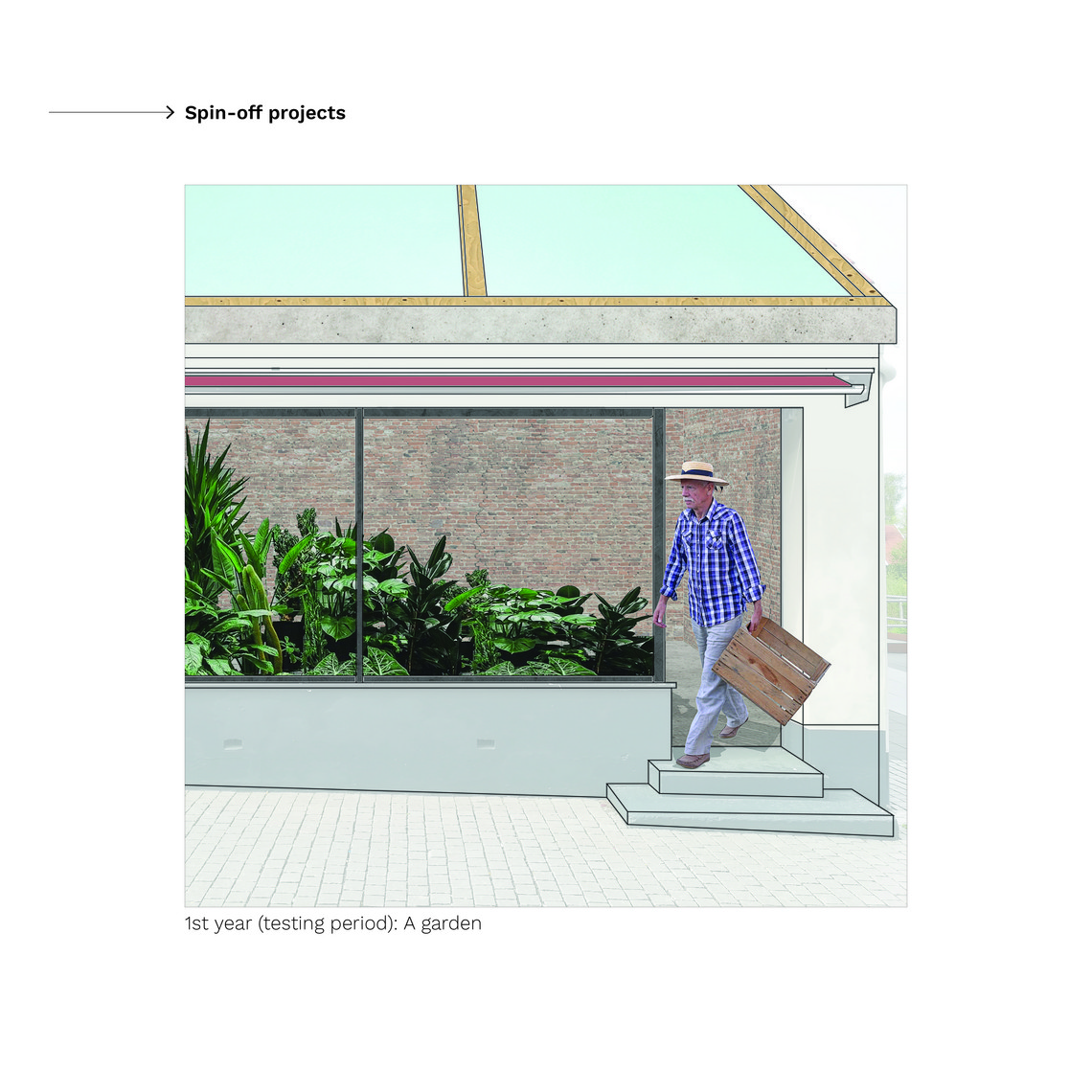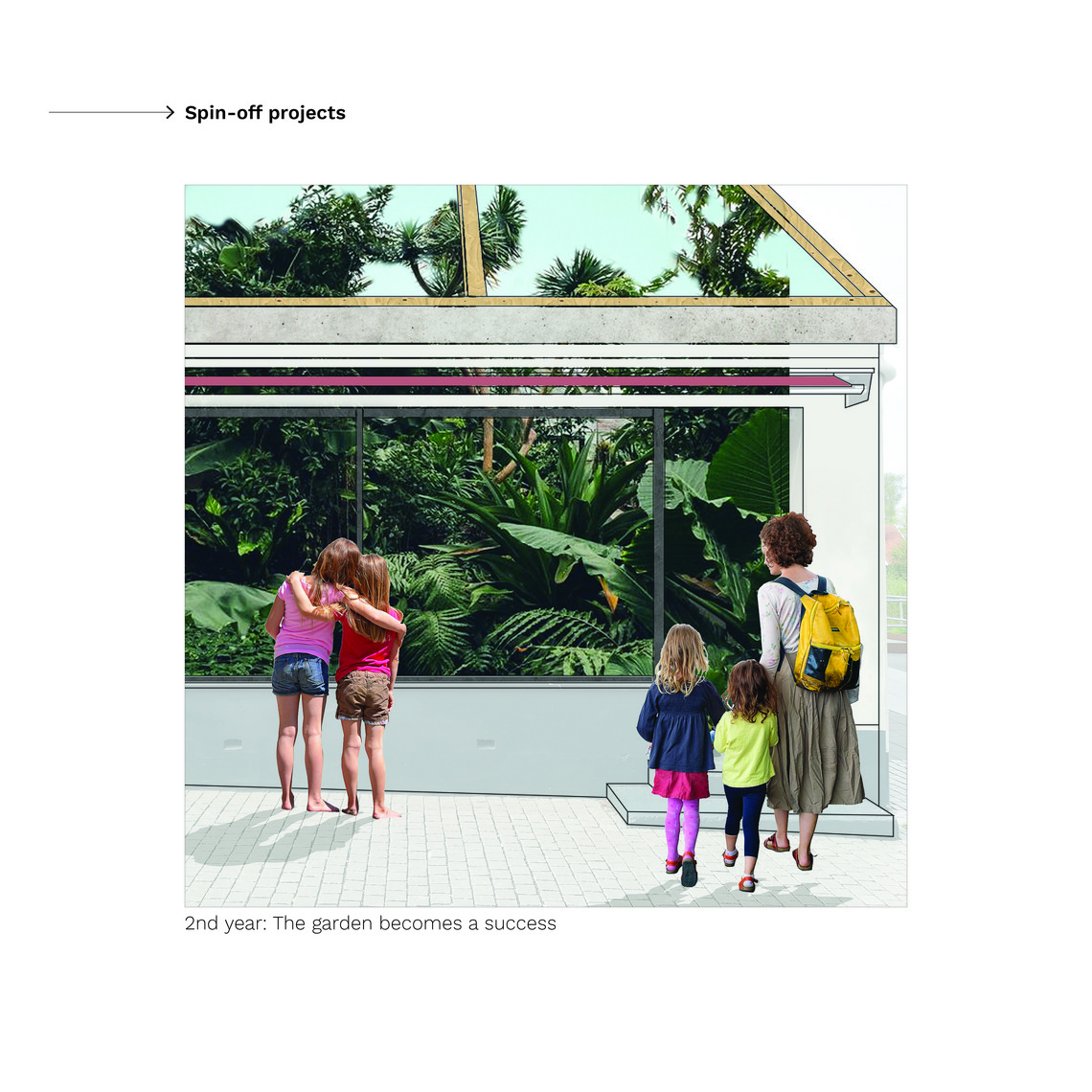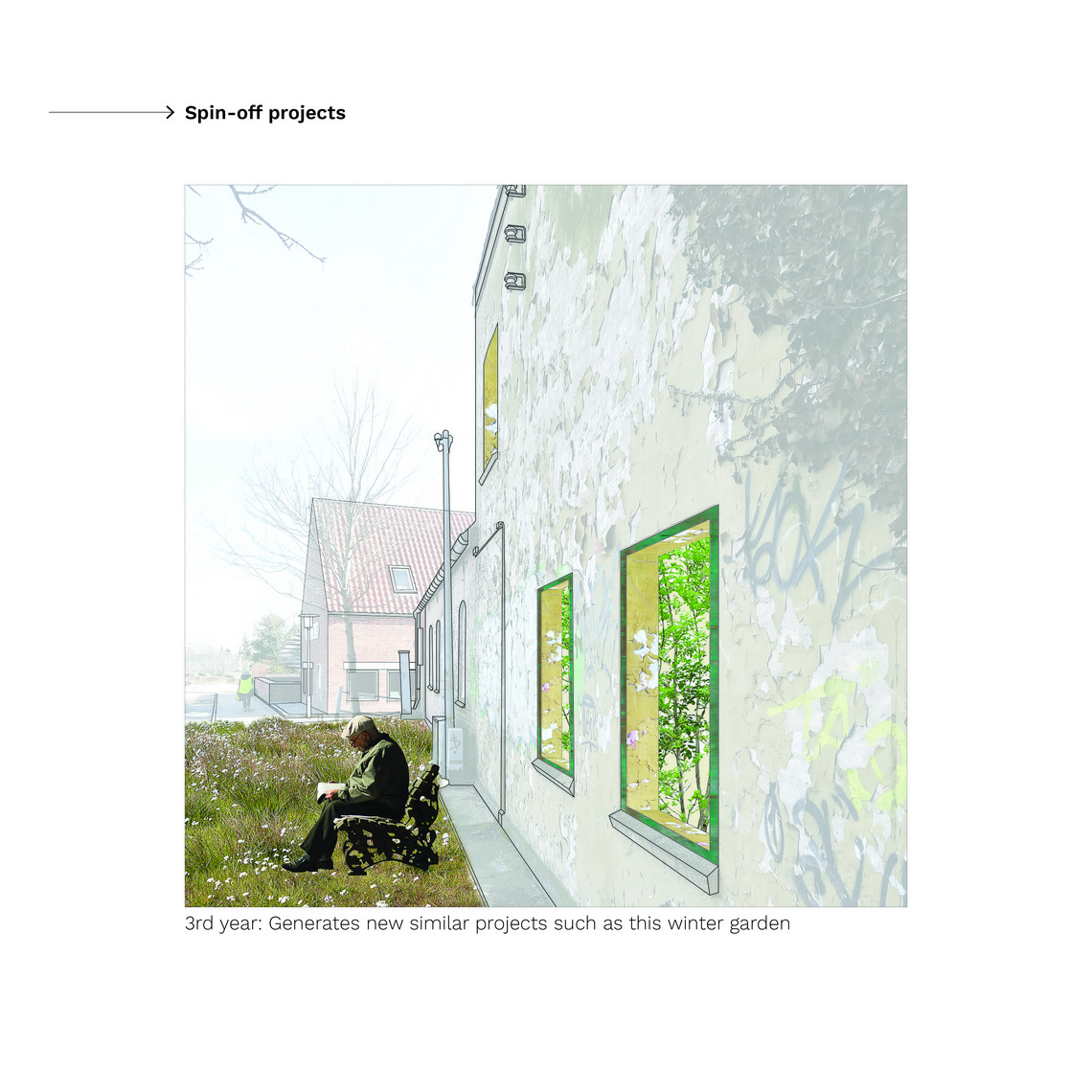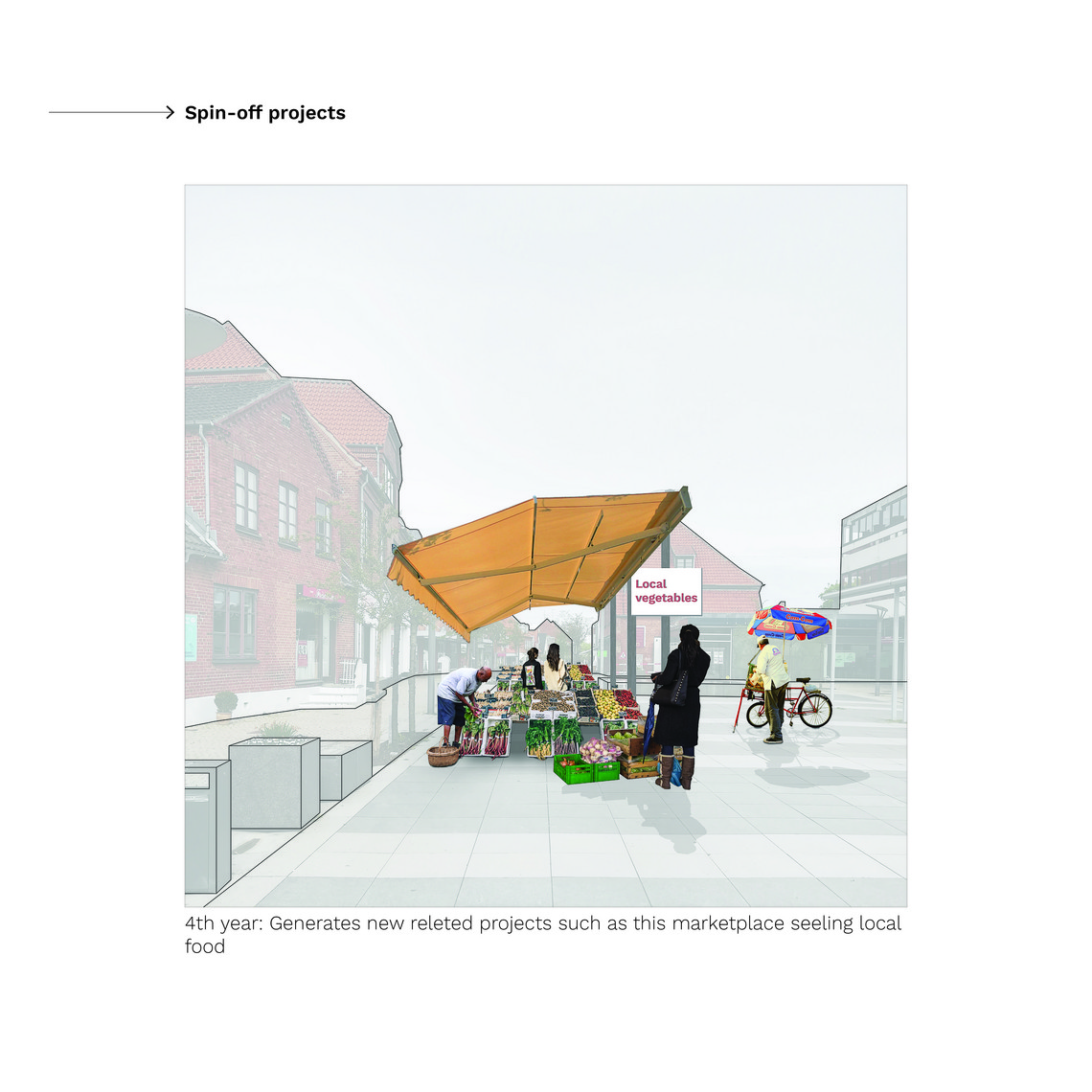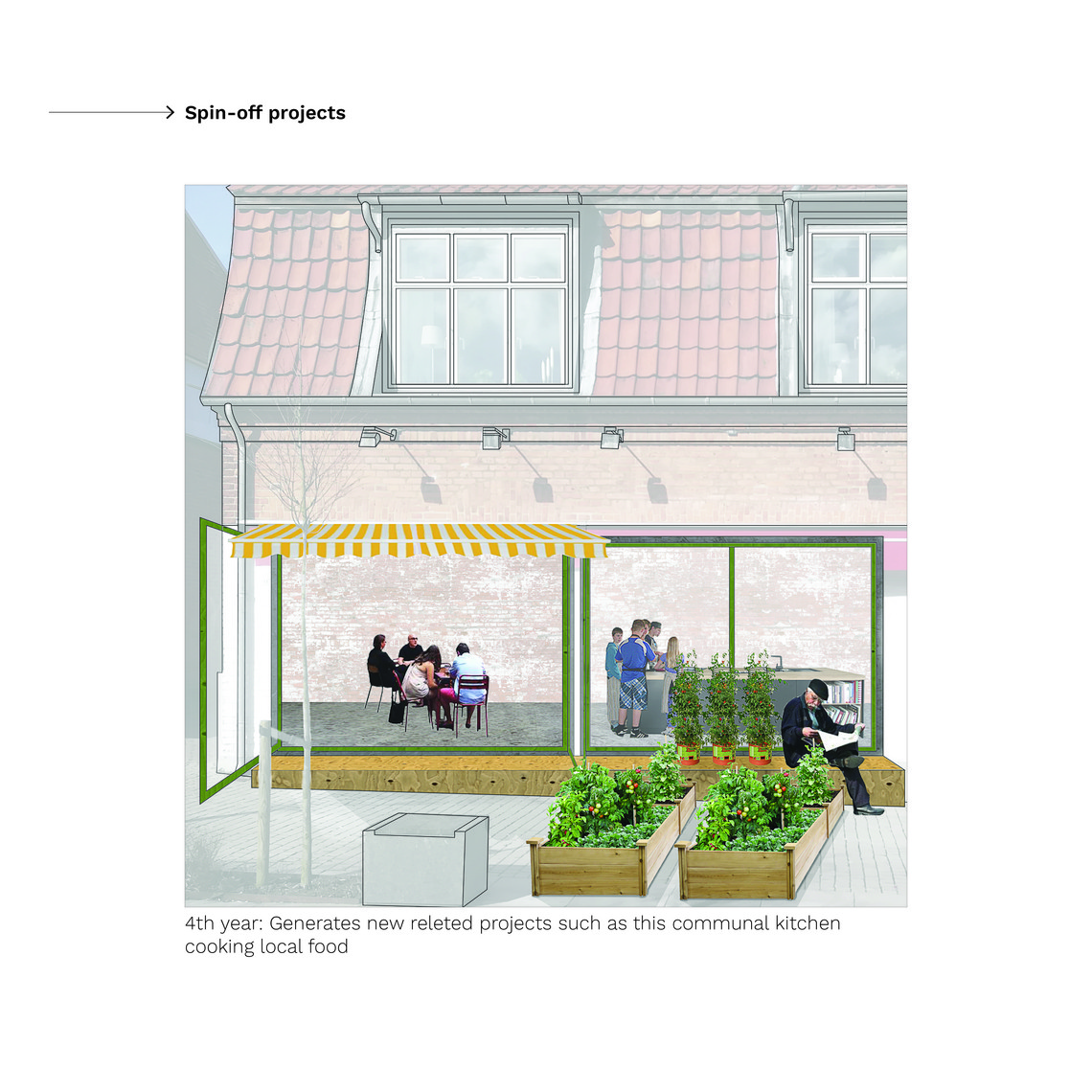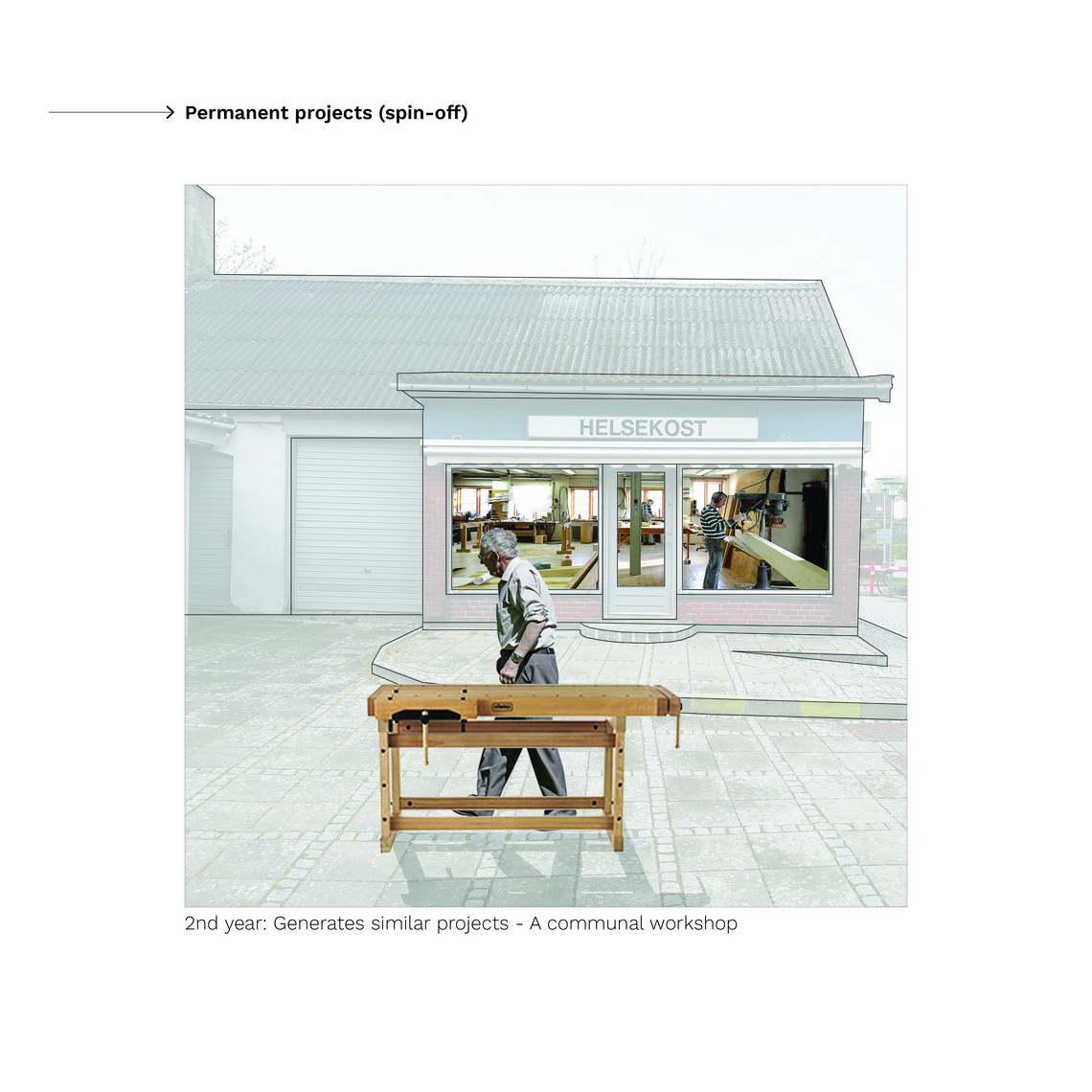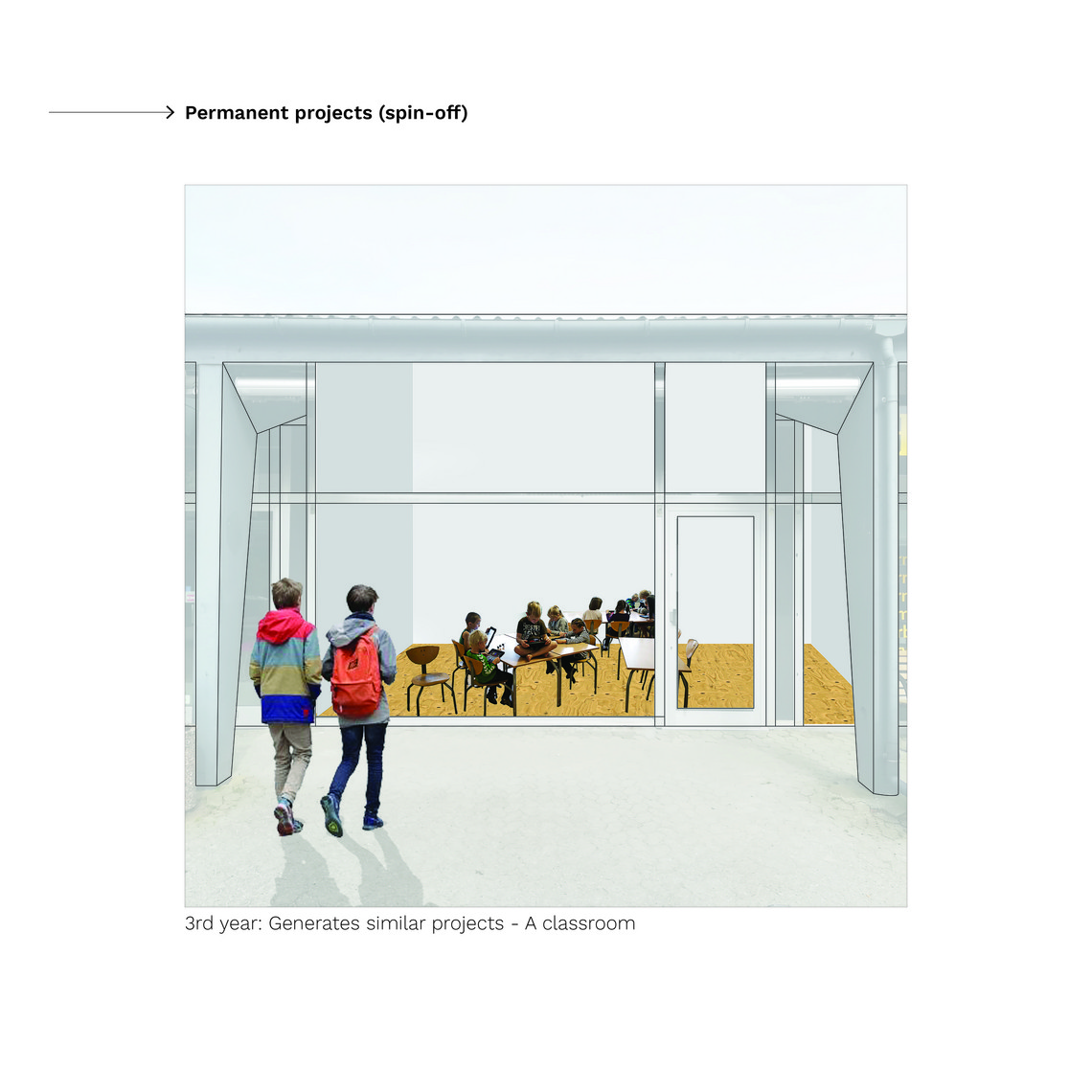
Service 2.0
This thesis proposes a new vision for the city centres in trade cities, which are experiencing a decline in retail due to changes in society related to a digitalization and centralization of services.
A change in service providing
A recent report (ICP, 2017) shows, that within the next decade Denmark is expected to lose 80 of its trade cities, thus going from 109 to 29 trade cities by 2030 (Pol., Feb., 2018). This will mean that the cities which are already experiencing a decline in retail will be even more challenged.
Historically, city centres have functioned as centres for commercial, cultural and social exchange for its surrounding community, creating a common spatial gathering place. For many decades, retail has been the main function in the city centres. Thus, when retail leaves the city centres, they lose their main function, and therefore many areas are left without a meaningful local/municipal public gathering place. For this reason, we must re-envision the services the city centre is providing and determine if they should maintain their function as important social nodes on a municipal, regional and national scale. By putting more focus on the city centre in these areas, and their importance in our society, we can maintain a meaningful and coherent everyday life for the people living in the affected areas and counteract the increasing segregation between municipalities. The city centre has the potential to function as a community anchor in the urban fabric.
A new vision for former trade cities is needed
The proposal zooms in on the metropolitan region, where a regional retail structure already seems to be decided – aiming for a regional service strategy. The strategy provides the basis for an explorative proposal of alternative services for the city centre of Helsinge. Helsinge is one of the cities affected by the decline in retail and is currently expected to lose its function as a trade city by 2030.
The strategy “Service 2.0” focuses on values directly related to the identity of the city by aiming for site-specific services, both when it comes to social, cultural and commercial services, and utilises the potential new digital technologies brings when it comes to service providing. For the city centre of Helsinge, this implies strengthening institutional and union life as well as improving the connection to its surrounding nature and landscape. The proposal builds up new and existing identities of the city centre and uses its empty buildings as catalyst for new life.
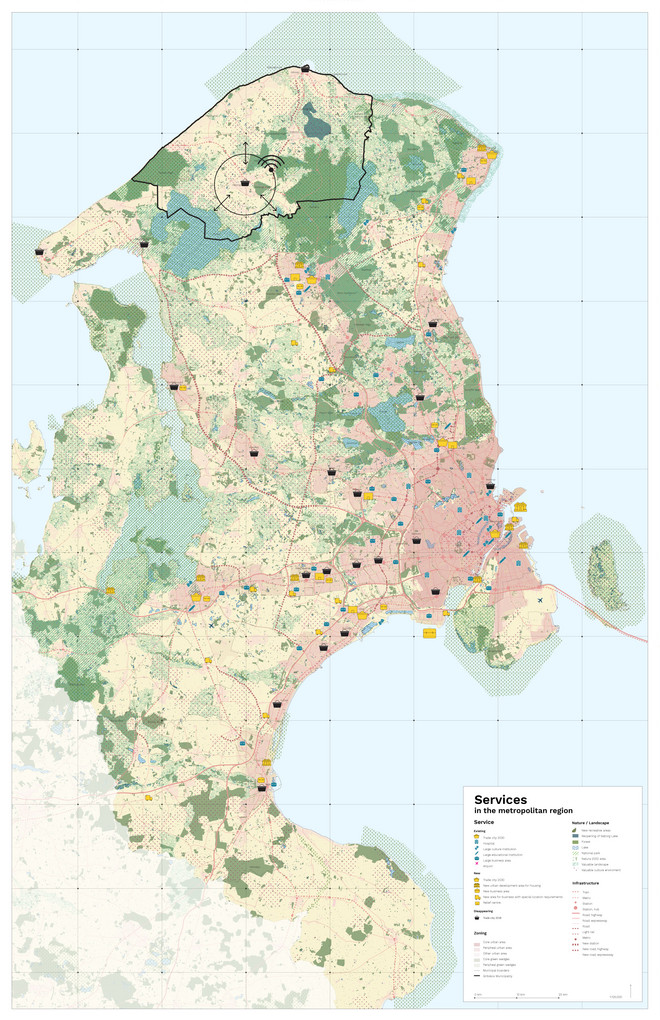
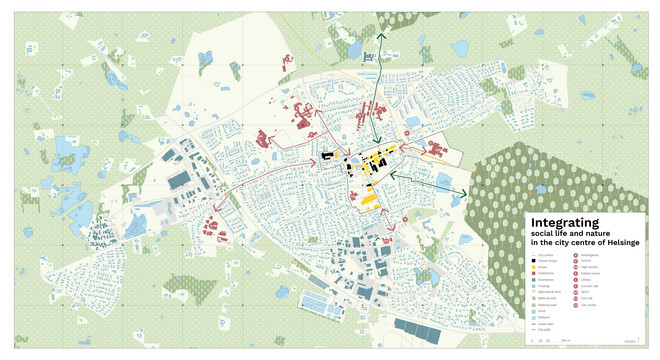
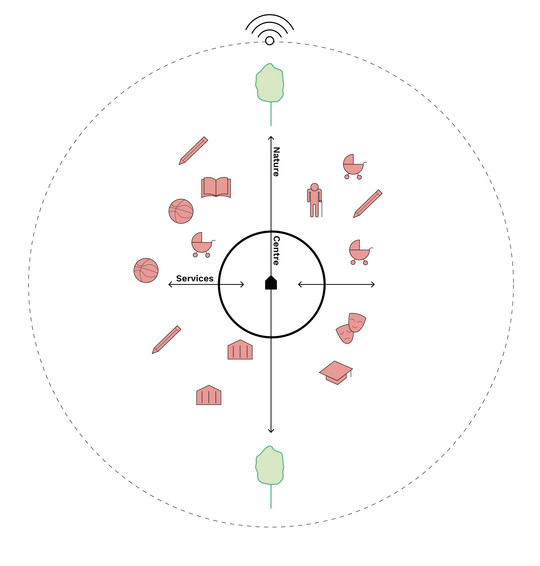
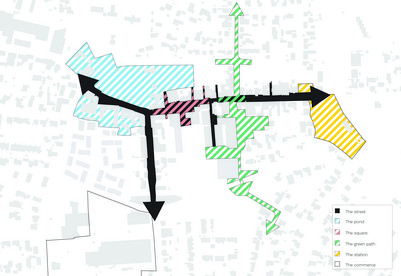
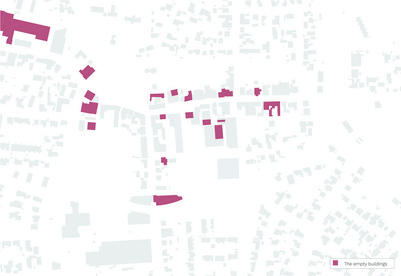
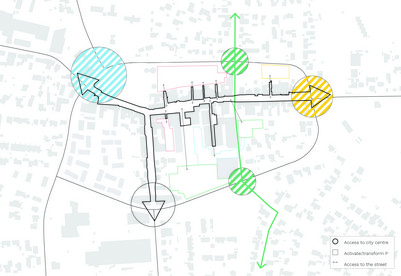
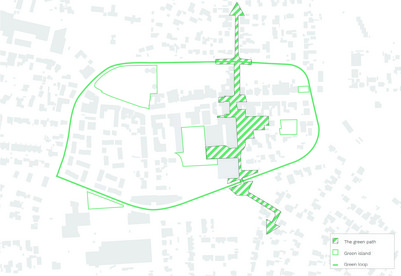
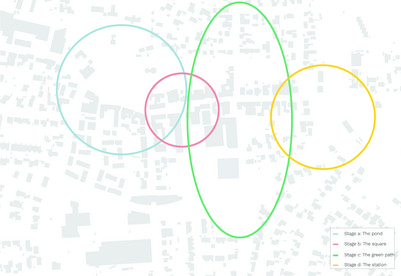
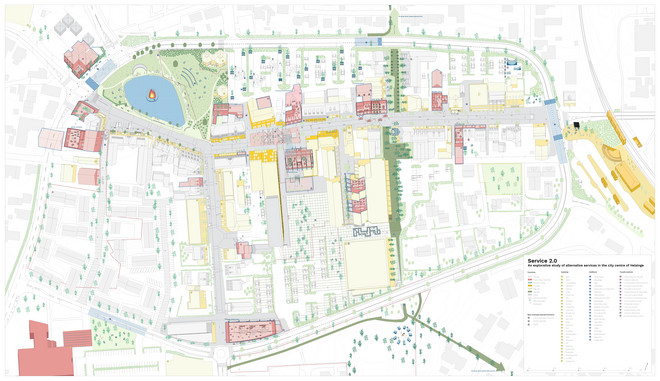
The process is managed by a steering committee consisting of the municipality, the owners/developers, Helsinge Business Association, the citizens, and a consultant. The consultant and the municipality are responsible for leading the process. The first step in the process is to come up with an idea, which can originate from many different actors, both private and public. The idea is assessed by the steering committee. If the financing of the idea to a project is not immediately solved, the steering committee applies for funds. These funds can be EU-funds such as the LAG-order, or Realdania funds such as 'Steder tæller' or 'Hovedbyer'. The project has a test period of half a year, but the funding lasts for five years. By funding the project for five years, the investors also have a better incentive to make changes and investments than with short-term projects. The five-year period also allows the project to be a part of the municipal planning. The development of the projects has endless of outcomes. Three of them could be: turning projects, spin-off projects and permanent projects. Turning projects are projects that only last for one year before a new project is established. Spin-off projects are projects which generates new projects during the process. Permanent projects are projects that show great success and therefore becomes permanent, but not necessarily generate new projects.
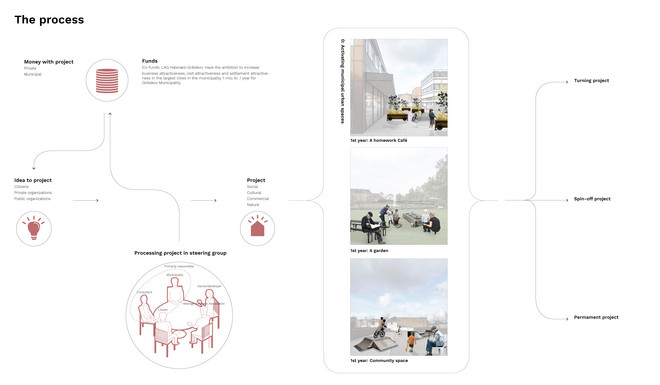
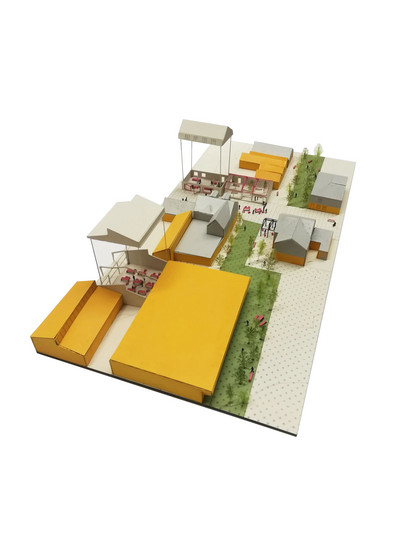


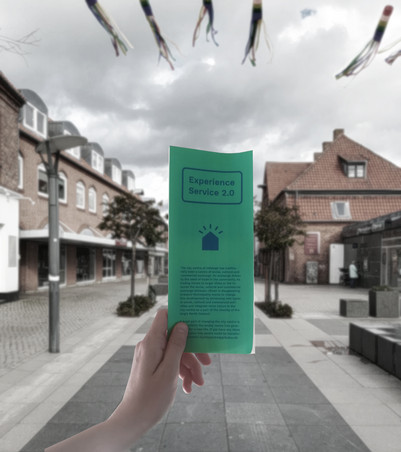
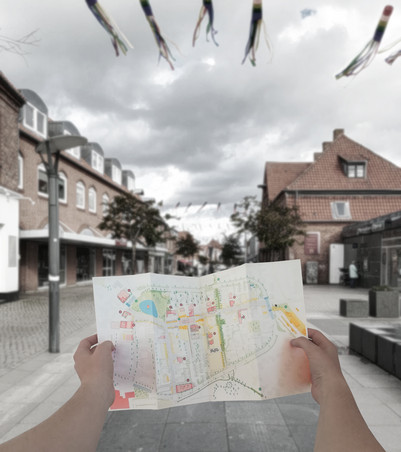
Program
Det Kongelige Akademi understøtter FN’s verdensmål
Siden 2017 har Det Kongelige Akademi arbejdet med FN’s verdensmål. Det afspejler sig i forskning, undervisning og afgangsprojekter. Dette projekt har forholdt sig til følgende FN-mål